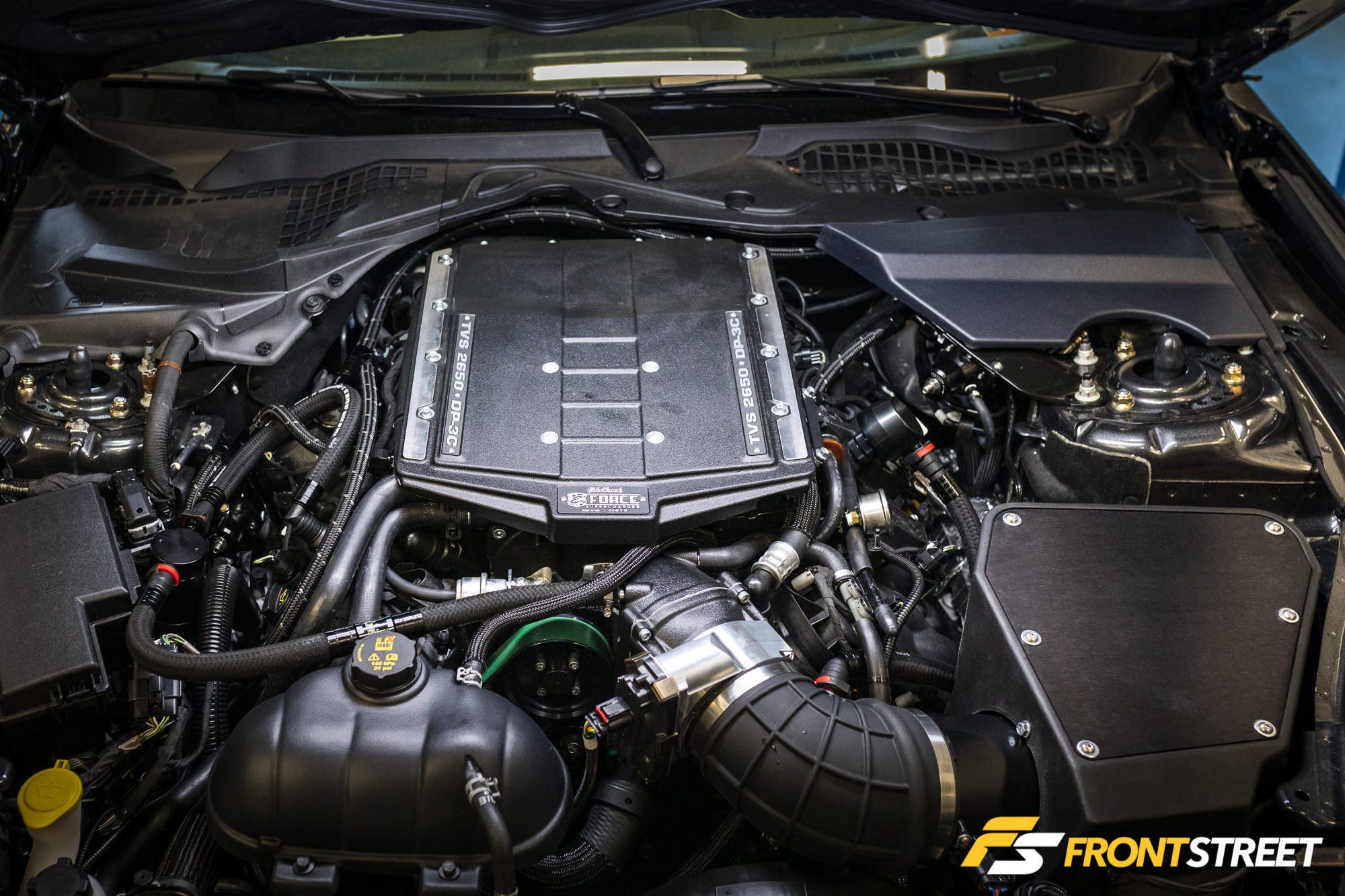
In today’s performance landscape, we are seeing factory vehicles—when combined with some form of forced induction—make staggering horsepower levels without removing so much as a valve cover. This can be attributed to a number of advancements over the last decade or so. Computerized engineering efforts permit modeling part fitment and reliability before the first part is ever manufactured. Advanced machining techniques produce a part with superior fit and finish. Additionally, modern material manufacturing capabilities allow for alloys which are far more durable and appropriate for close-tolerance machining than ever before. These elements combine with aftermarket-tuned engine calibrations which rely upon wideband oxygen sensors to ensure highly accurate air/fuel ratios and ultimately, supply performance enthusiasts with performance that is, quite simply, astonishing.
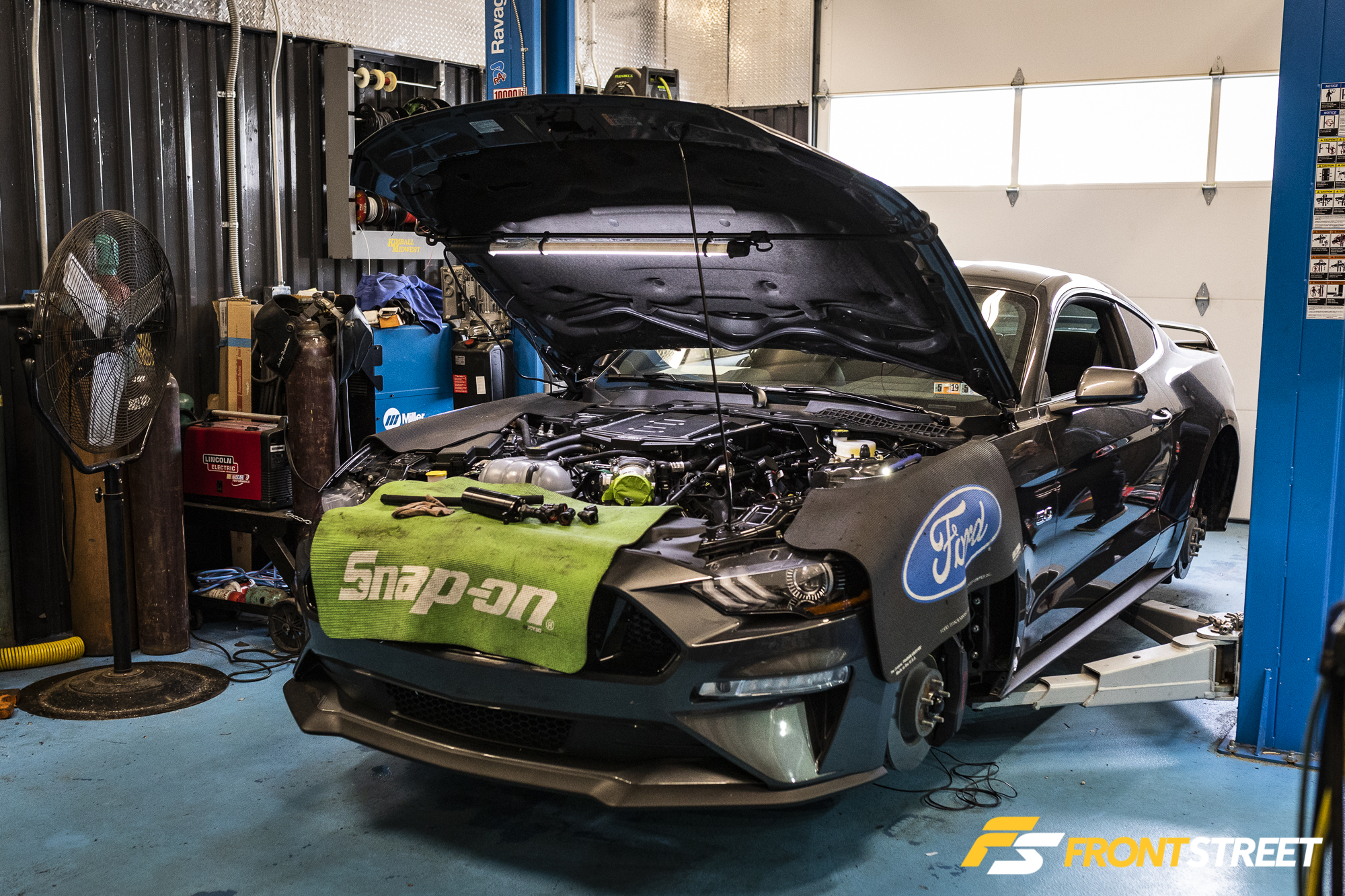
This 2018 Mustang GT is owned by NMRA Street Outlaw racer Brian Devilbiss and has been hopped up by Evolution Performance with one of Edelbrock’s E-Force 2650 supercharger systems, and you will be shocked by its capabilities on a completely stock engine outfitted with long-tube headers and an exhaust system, because we sure were! Follow along as we detail the Stage 1 and 2 systems, the installation process, and the kit’s performance both on the dyno and at the track.
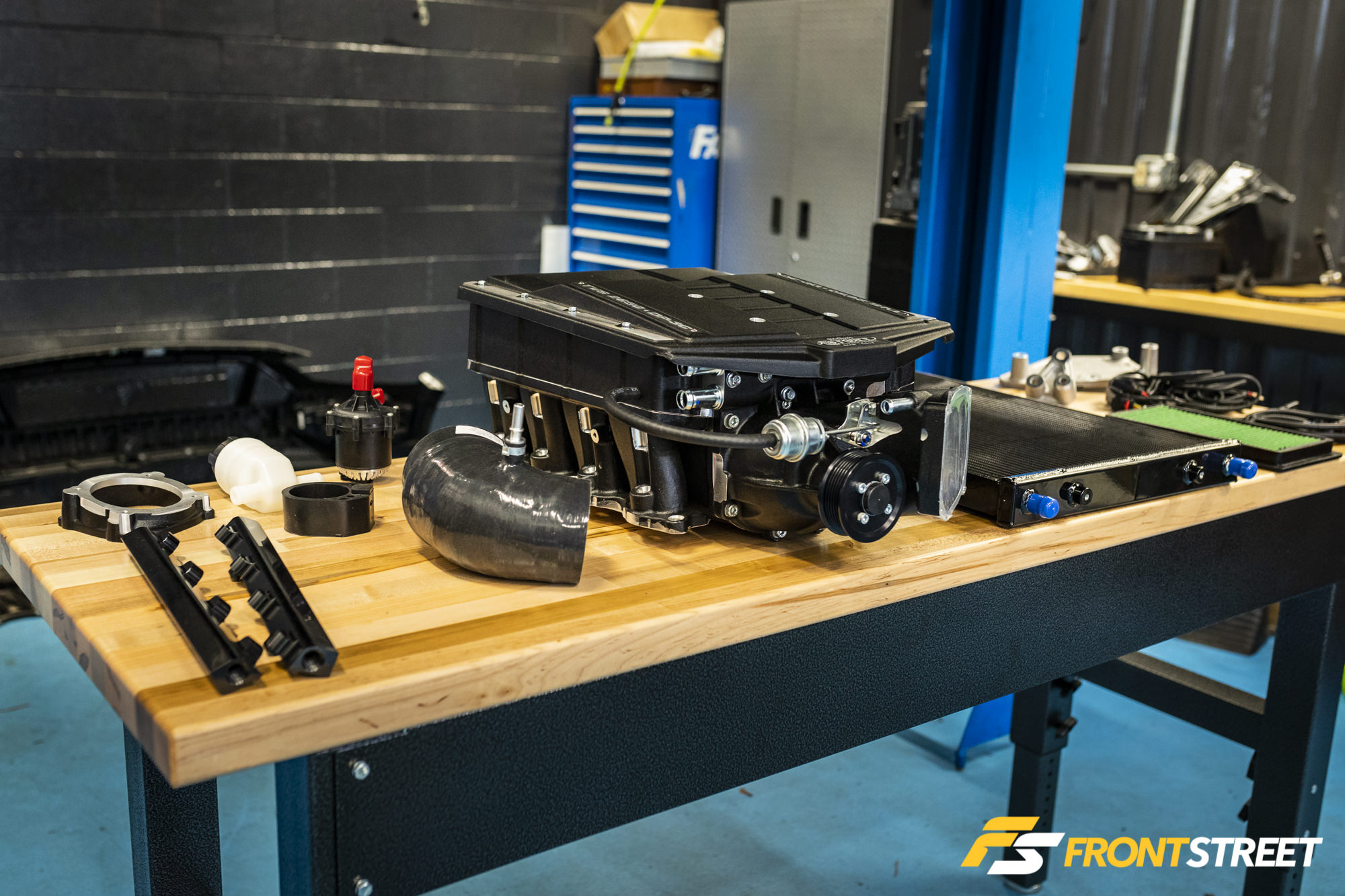
“We chose this kit for its unique design and excellent fit and finish. We’ve noticed that the intercooling system does an excellent job of maintaining consistent temperatures, and installation is probably one of the easiest in the industry,” says Evolution’s Fred Cook.
The Parts
One thing we specifically want to mention—and we’ll probably say it more than once during the article—is how easy the E-Force system is to install. In Stage 1 form, it’s designed to drop into the car with no modifications to any other components, and is considered a complete kit. Edelbrock supplies all of the parts and pieces required for installation down to the nuts, bolts, replacement harnesses, and even the zip ties to make the installation look nice.
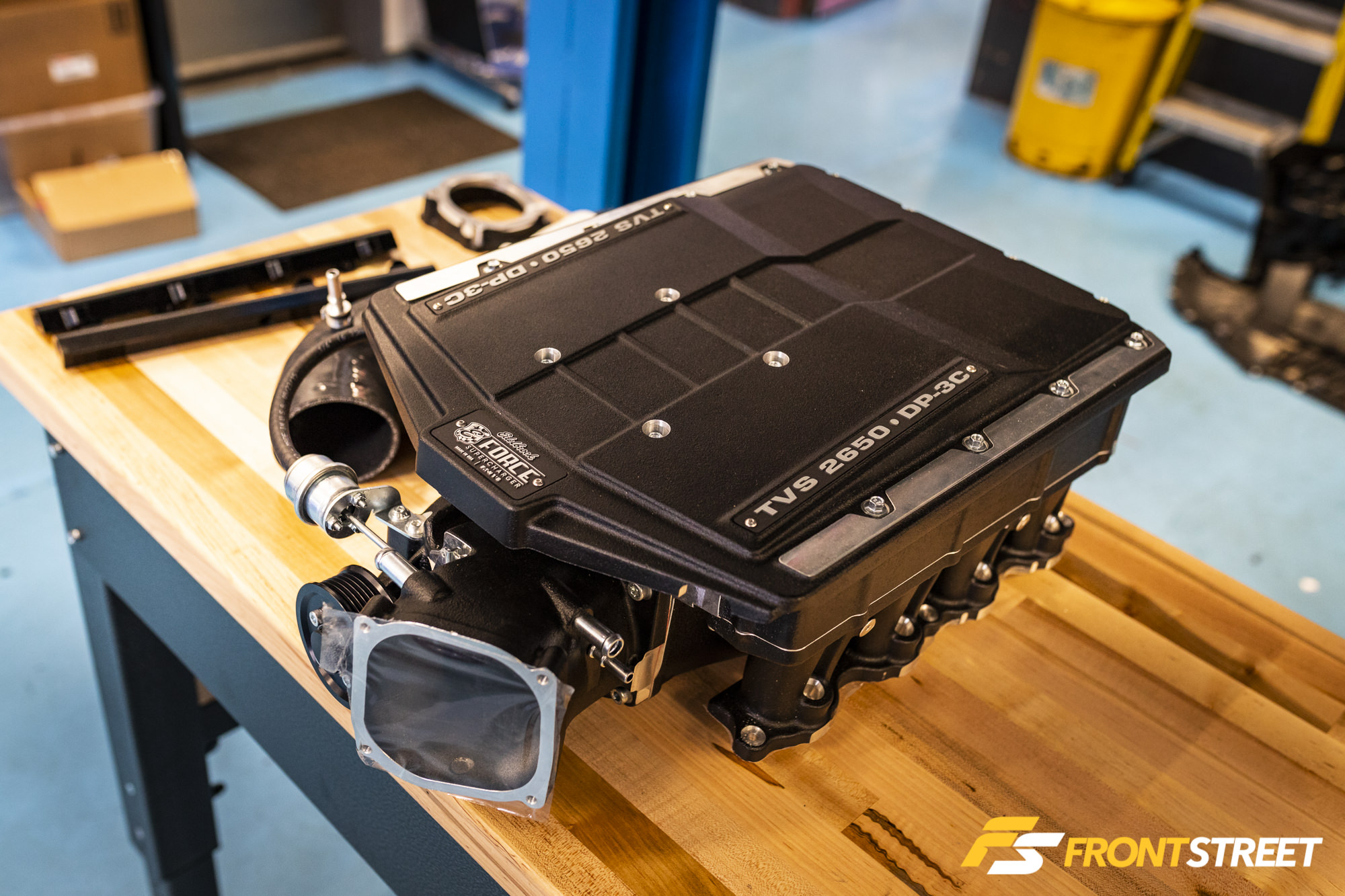
The kit is based around the Eaton TVS2650 rotor pack, which is part of the company’s Twin Vortices Series of supercharger rotors. In various forms and displacements, these have been found in many factory-supercharged vehicles like the Corvette ZR1, Cadillac CTS-V, Jaguar XF-R, Lotus Evora 400, and others. Eaton has made the TVS rotor packs available to several aftermarket engineering partners—of which Edelbrock is one—to develop their own supercharger systems.
“This supercharger system builds instant manifold pressure,” says Nick Purciello, Edelbrock’s Supercharger Product Line Manager.
Edelbrock’s E-Force supercharger systems, which are available for many vehicles, boast the company’s traditionally excellent fit and finish and an OE level of engineering. Each part fits as it should, and with the exception of a small bit of plastic next to the radiator which needs to be removed, there is virtually no cutting, welding, or other nonsense involved with the install of this system in either Stage 1 or 2 form.
“Edelbrock has provided excellent support,” says Cook. “They’re just a phone call away in the event of an issue.”
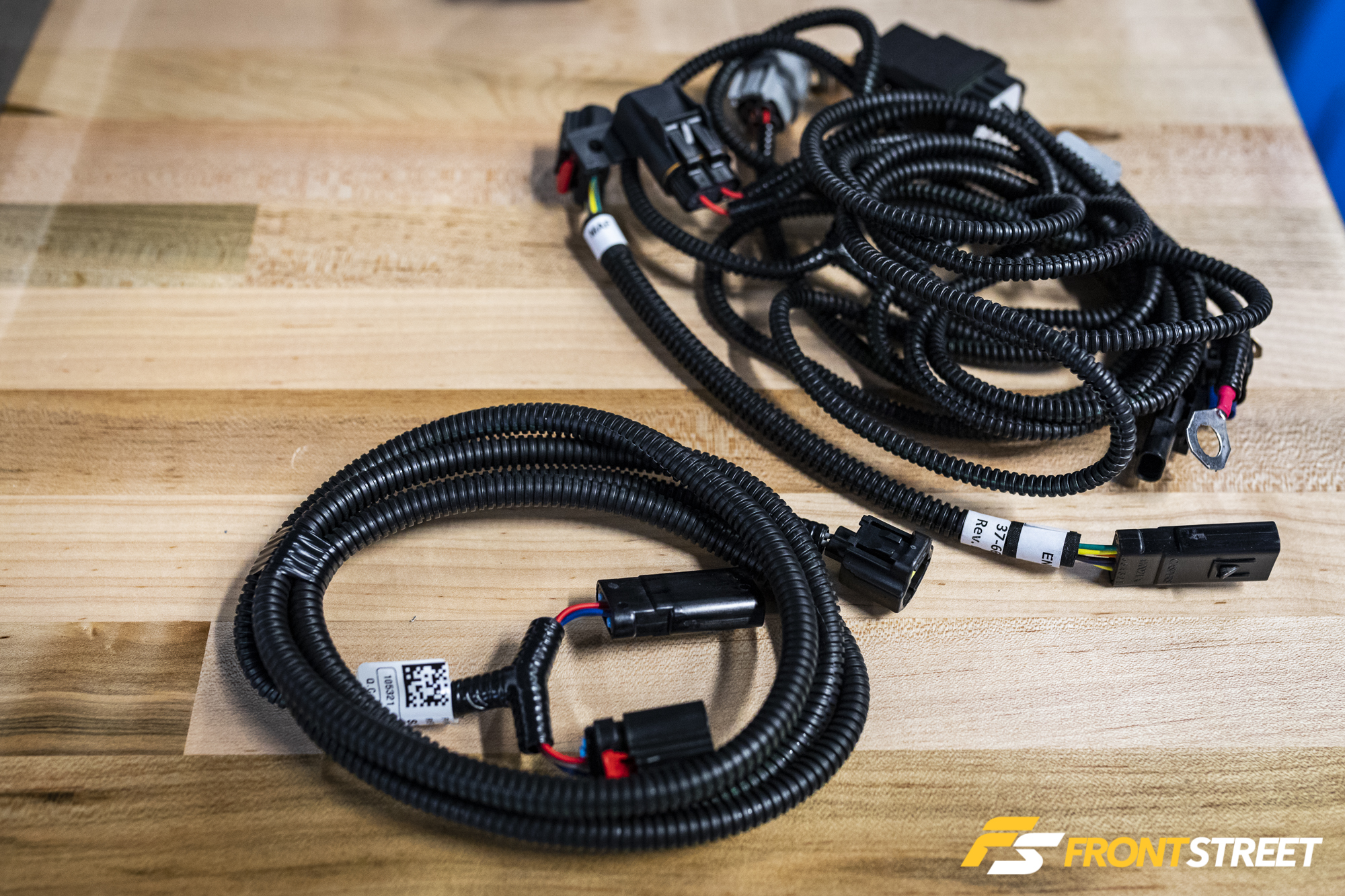
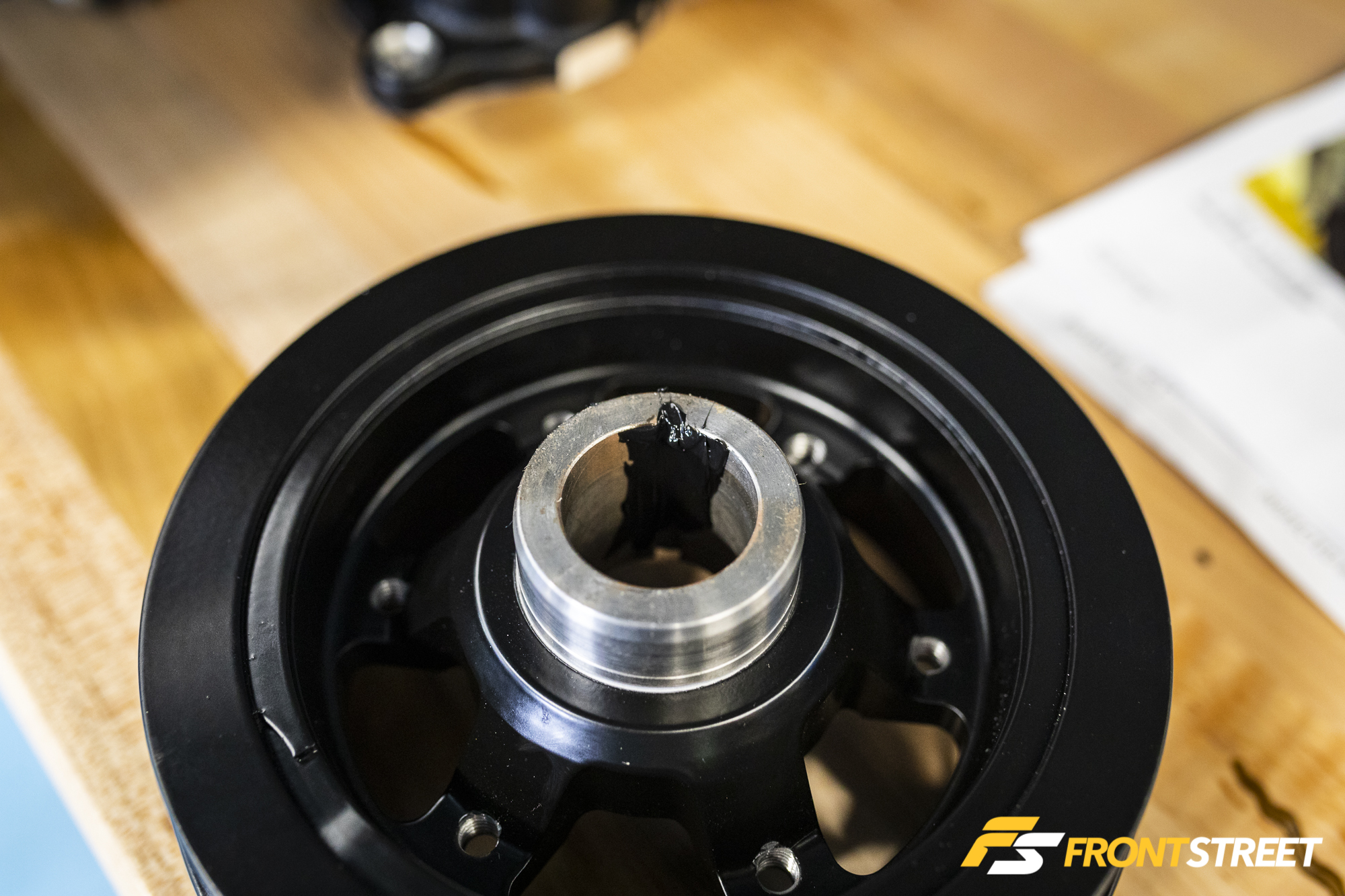
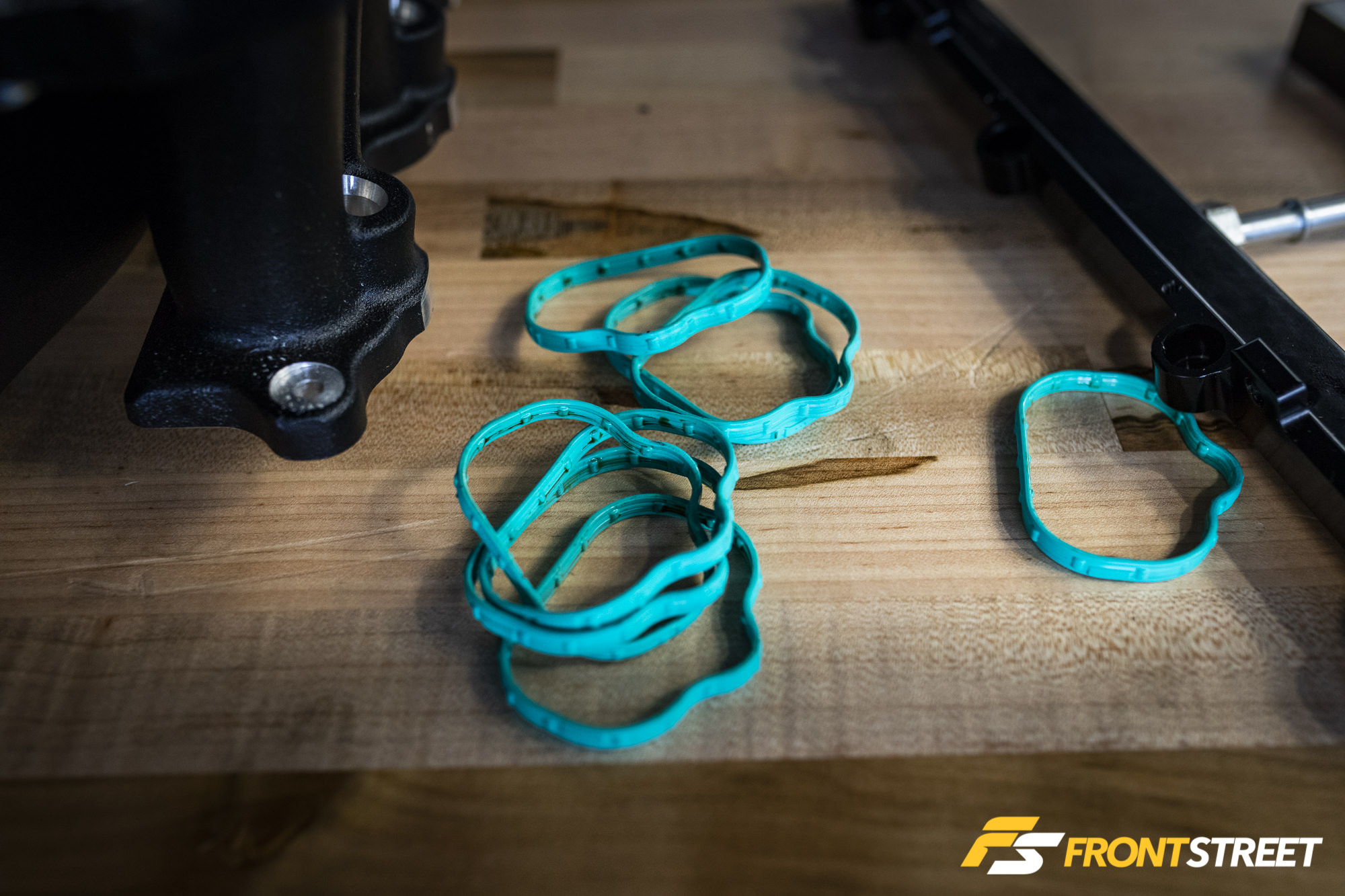
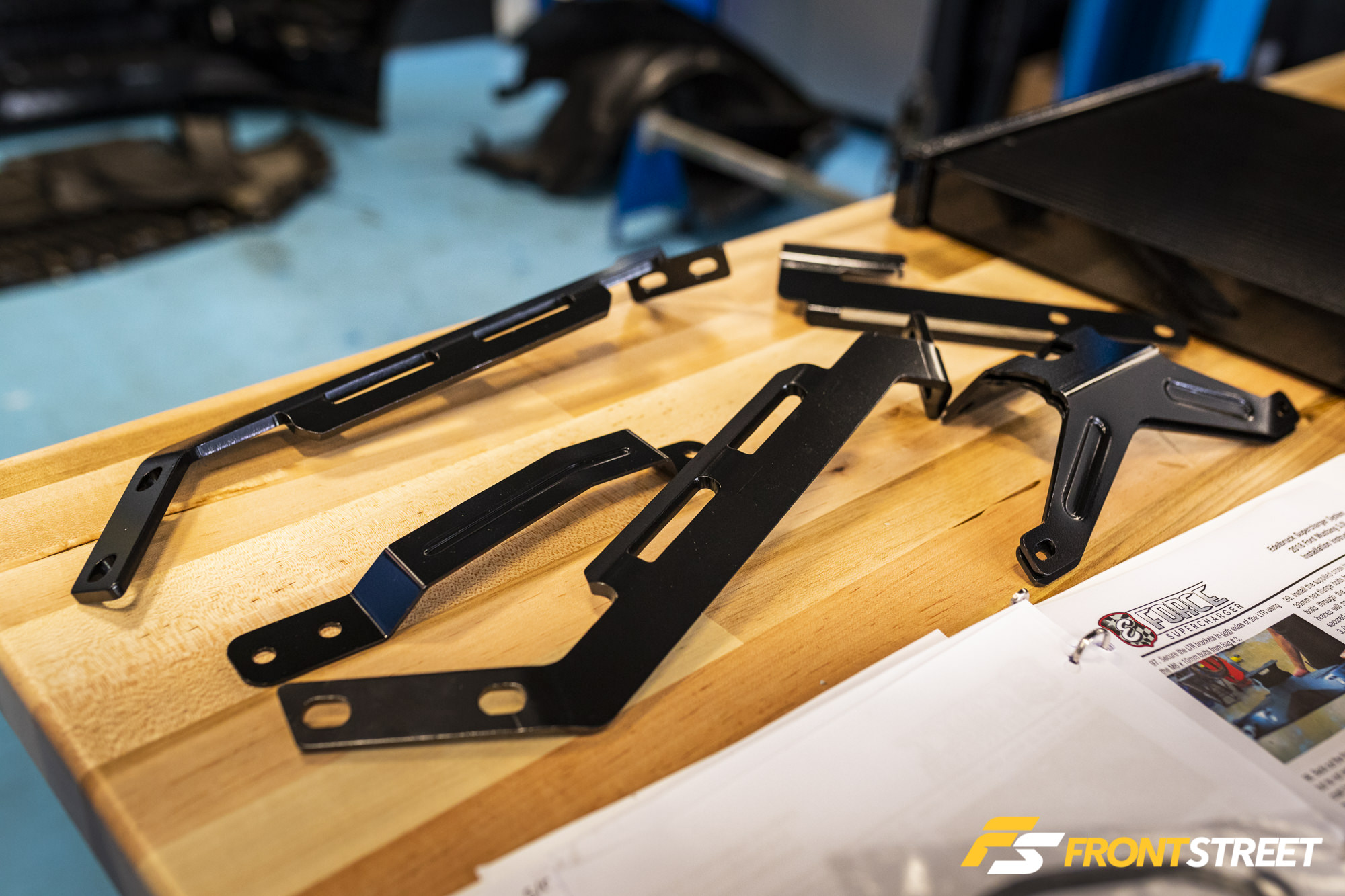
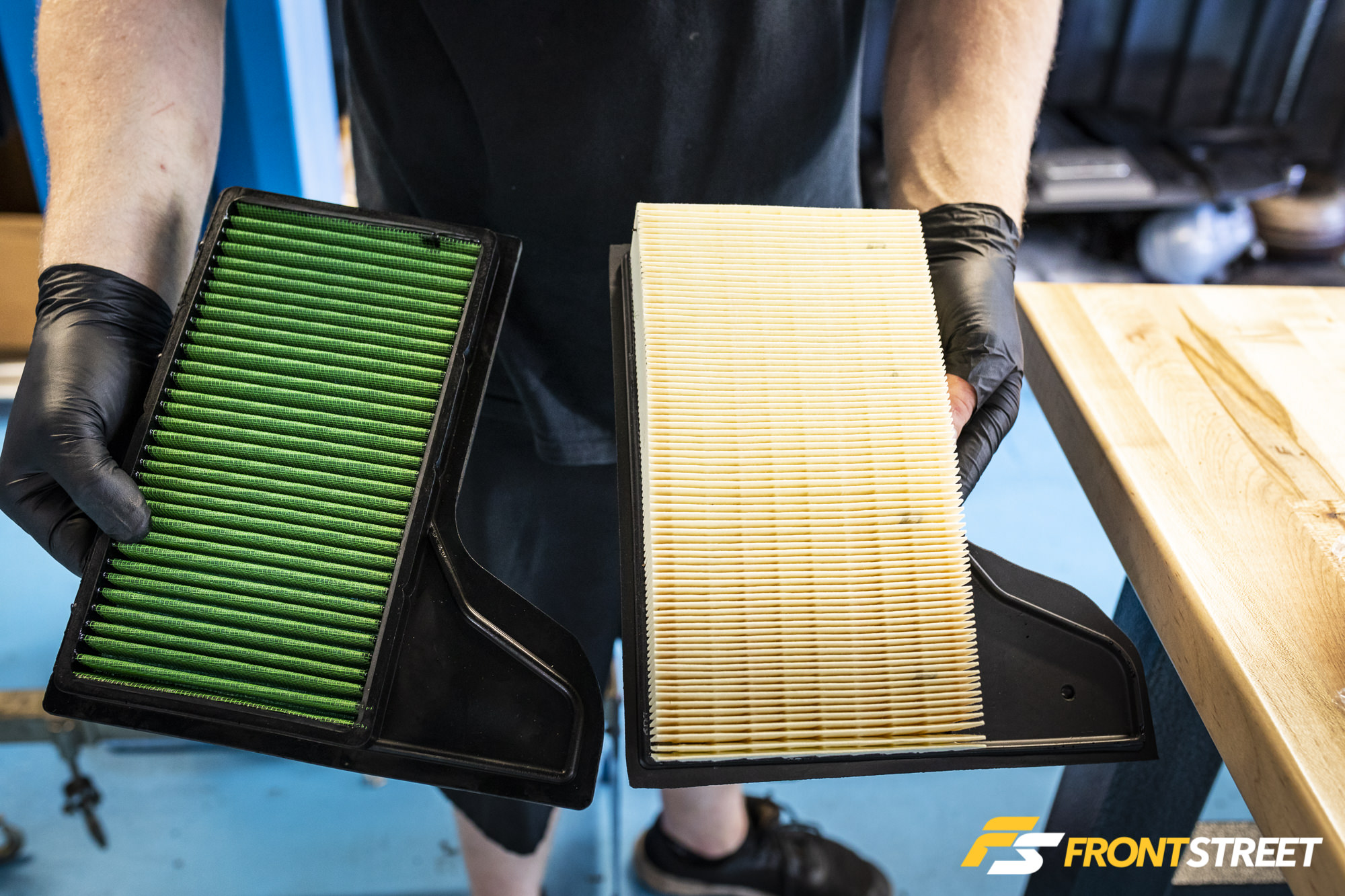
Some of the auxiliary parts included with the kit
What makes the TVS2650 so special? Eaton’s 2300 rotor packs are legendary, and the 2650 offers a number of specific benefits to improve performance. First off, the 2650 designates the displacement: 2.65-liters of air is forced into the engine with every revolution of the rotors, which is 15-percent more than the 2300 Series 2.3-liter superchargers of earlier designs. The rotors have been twisted an additional 10 degrees, now 170 degrees versus the 2300’s 160-degree twist. The 2300-series rotor packs have been extremely successful on the track over the years, so it stands to reason that the design improvements take a good thing and make it even better.
“We have one of these systems on a 2017 5.0-liter Mustang owned by one of our employees, so we knew what it was capable of,” says Cook. “We’re not surprised at all with how it performed on this car. It was amazing.”
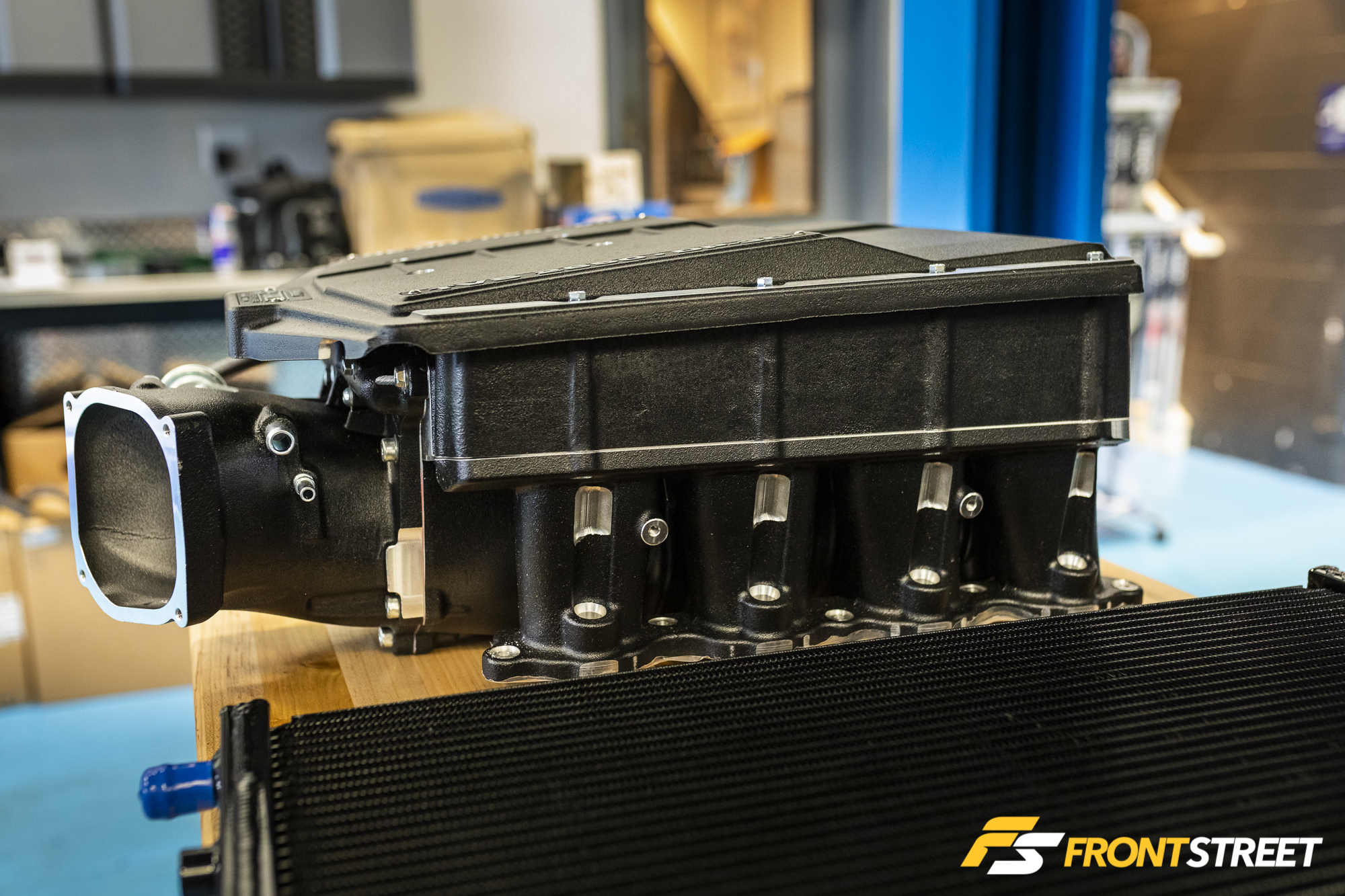
One important thing to note about TVS-style superchargers, and what makes them so attractive to the end-user is that there’s no waiting for the boost to come in—it’s virtually instant. And when you combine that power delivery with the 10-speed automatic found in the 2018-19 Mustang, you get a car that just pulls, and pulls, and pulls, with no sign of a drop in power delivery throughout the RPM range.
“Your traditional centrifugal supercharger needs RPM to build boost, but with the E-Force there’s no waiting for that power to come on. You put your foot to the floor, the bypass valve closes, and an instant 10psi—or more—is available from very low RPM. That means faster acceleration from the moment you want to accelerate, to the moment you want to stop accelerating, if that ever exists,” says Purciello.
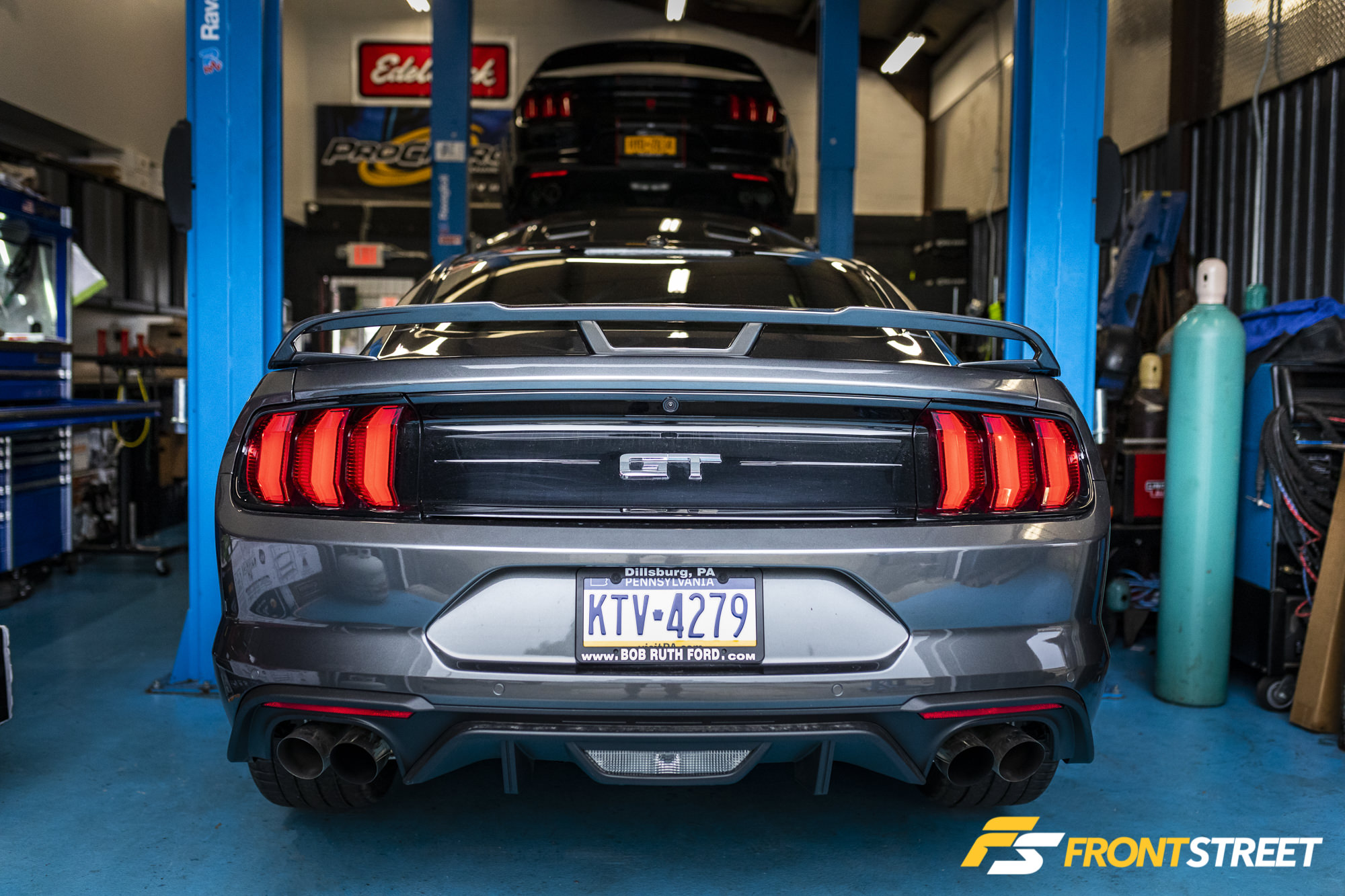
The Install
Remember where I mentioned above that Edelbrock designs its systems to be simple to install? Well, I was shocked at how easy it really was to install this system on the car. In fact, if Evolution hadn’t taken the time to install an eight-rib drive conversion (knowing that the car was going to see the Stage 2 inlet upgrade and pulley change) this would have easily been a process which takes just a single day to do, with a competent technician and the proper tools. It’s certainly no more than a weekend even with the eight-rib upgrade and a good friend or two who are interested in hanging out in the garage with you to lend a hand when necessary.
“Whenever our engineers are designing and developing a new kit, that’s one of the first things that’s on their priority list: how do we make this kit able to be installed by the average guy in their driveway or garage if they choose to do so,” says Purciello.
“Also, we make the kit so we have a reasonable install and labor time for a shop so it’s not three days in the shop. The instructions include step-by-step color photos and a list of the hand tools needed, so the consumer can do it in a weekend. In a shop it’s eight to 12 hours depending on the kit.”
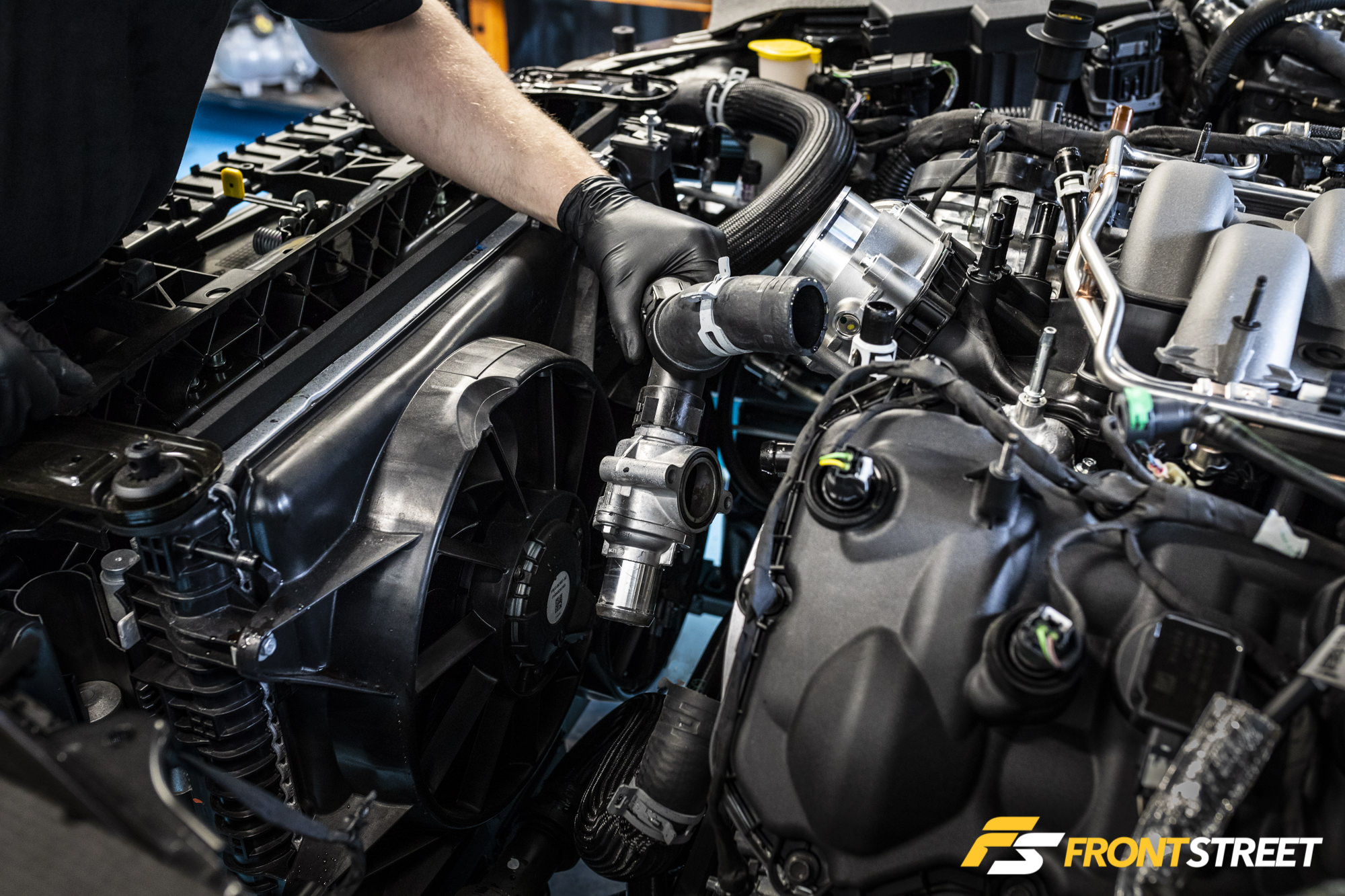
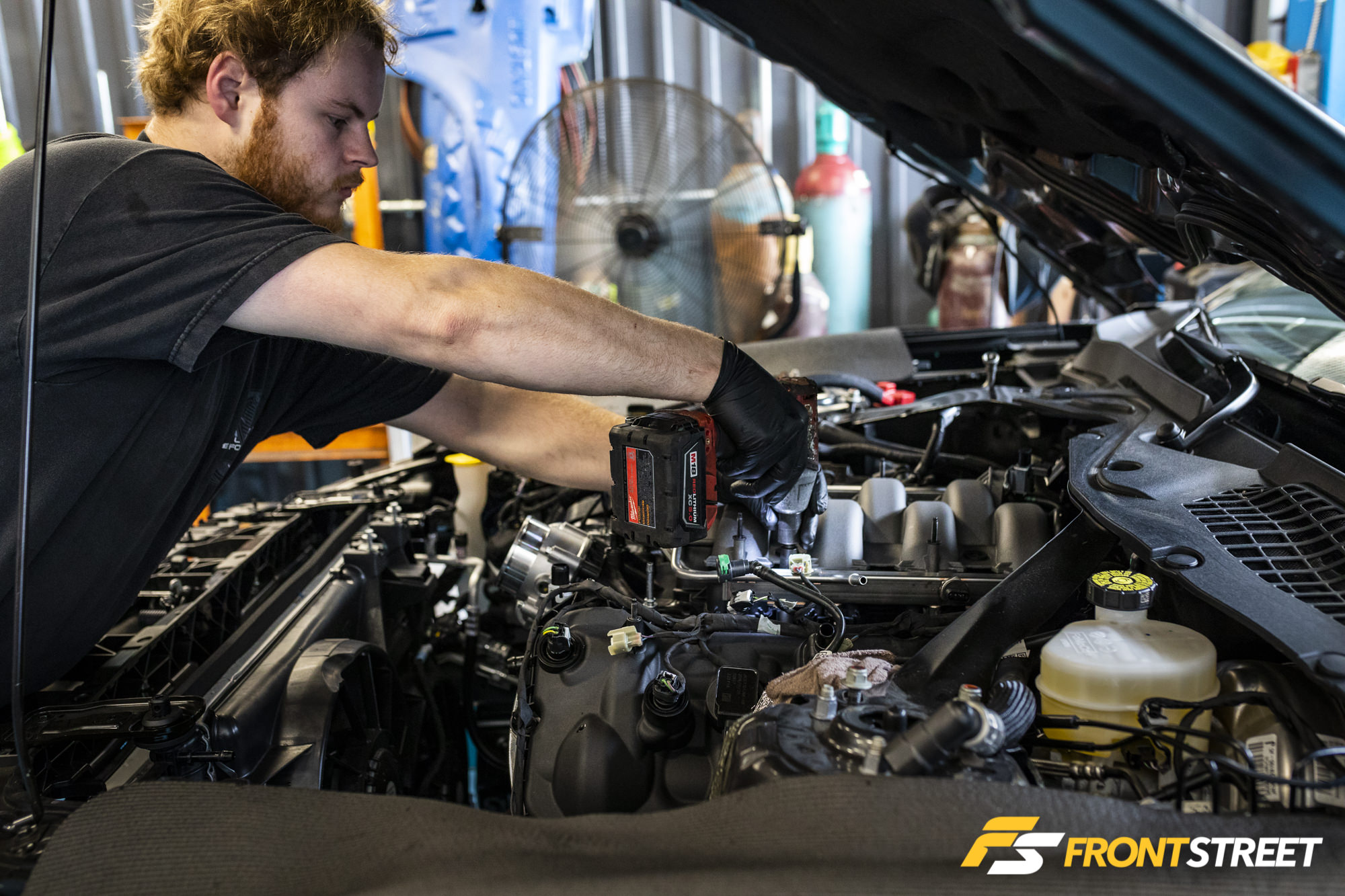
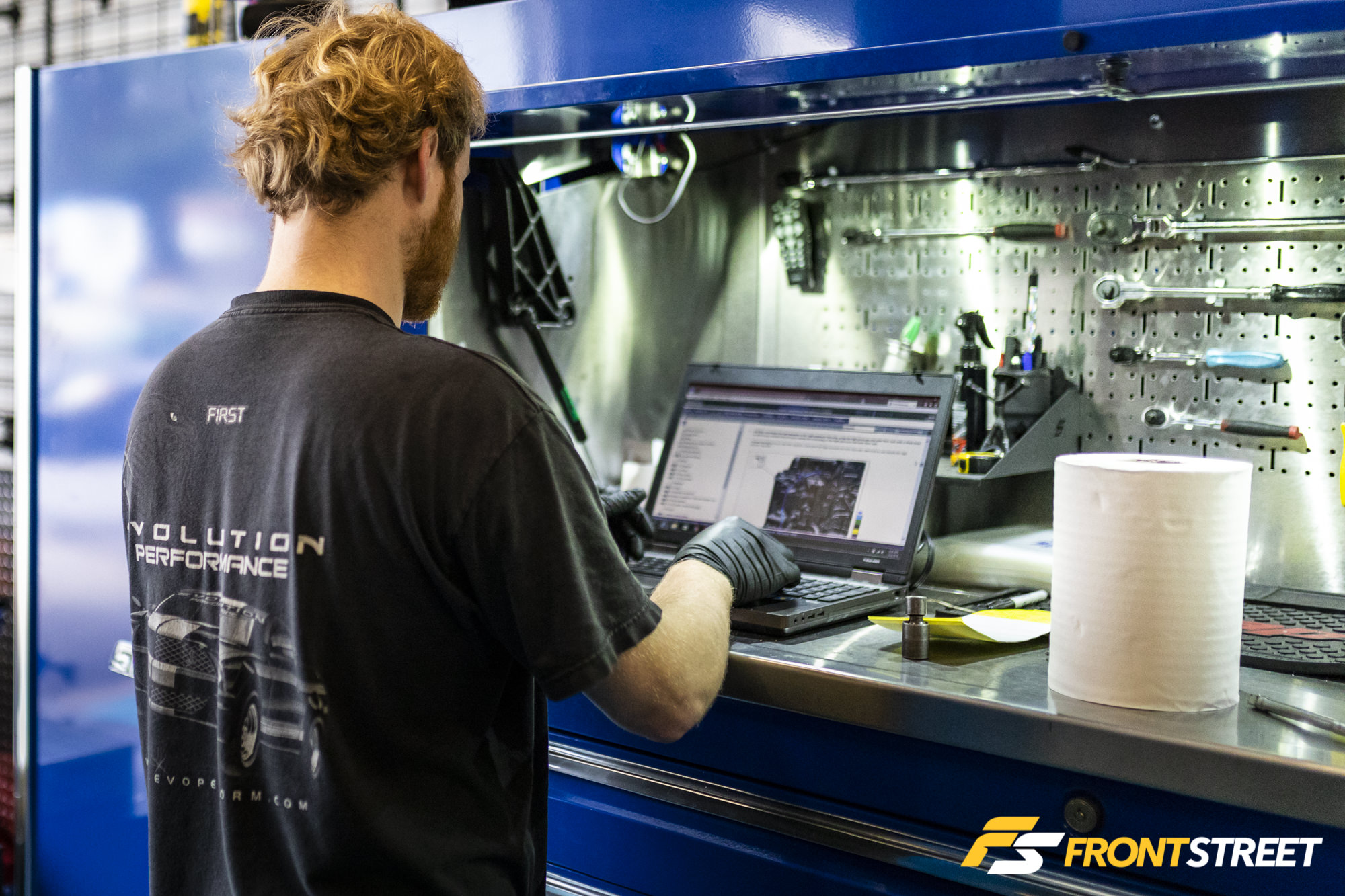
There are several steps to preparing the car for system installation; removing the front dress items and the existing air inlet and intake manifold are done quickly. The modular nature of today’s engines, with O-ring gasket systems and easily-removed components, made it easy for Evolution Performance technician Steven Schechterly to get the car ready for the E-Force. The detailed instructions provided from Edelbrock make the task simple.
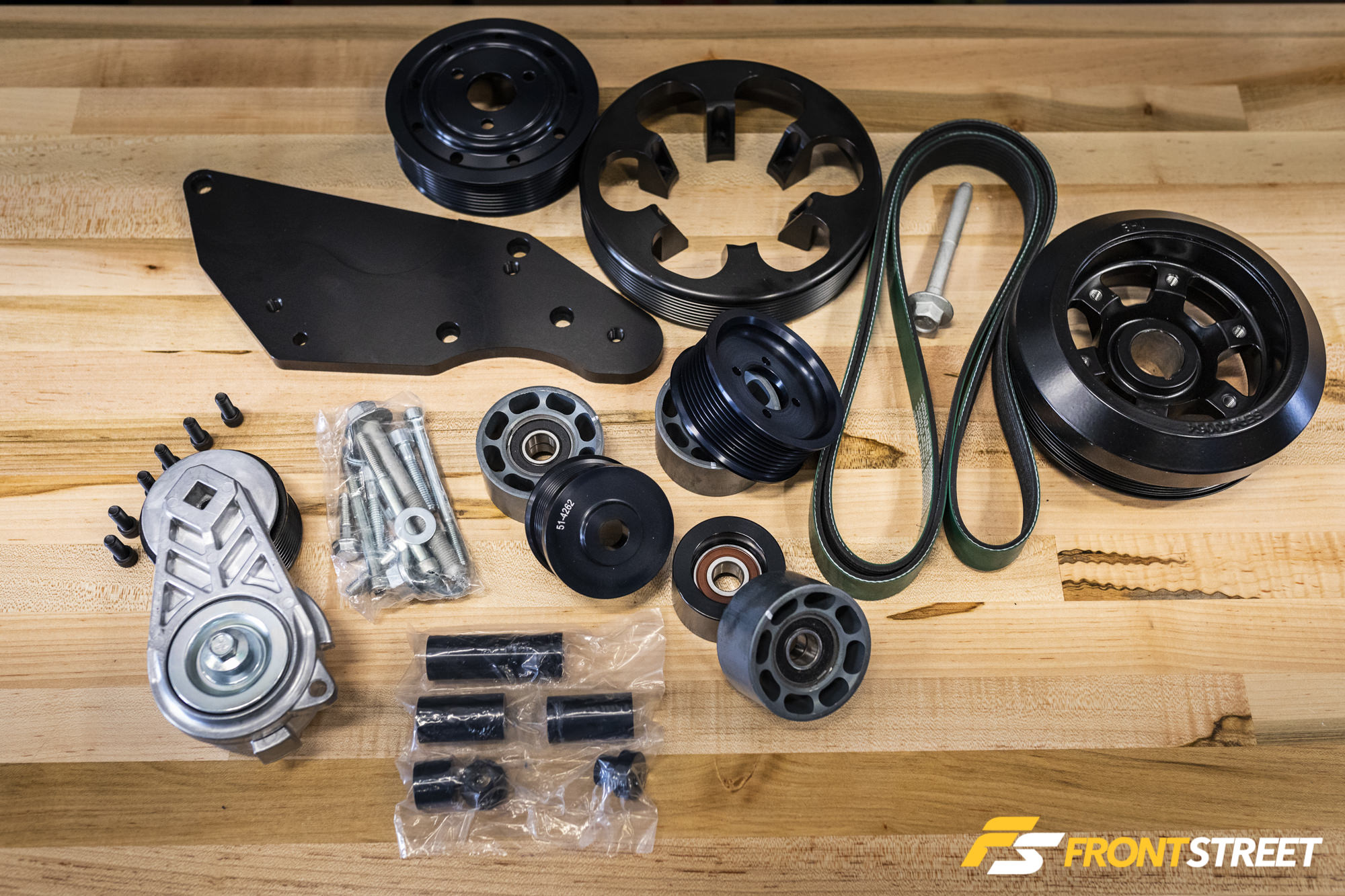
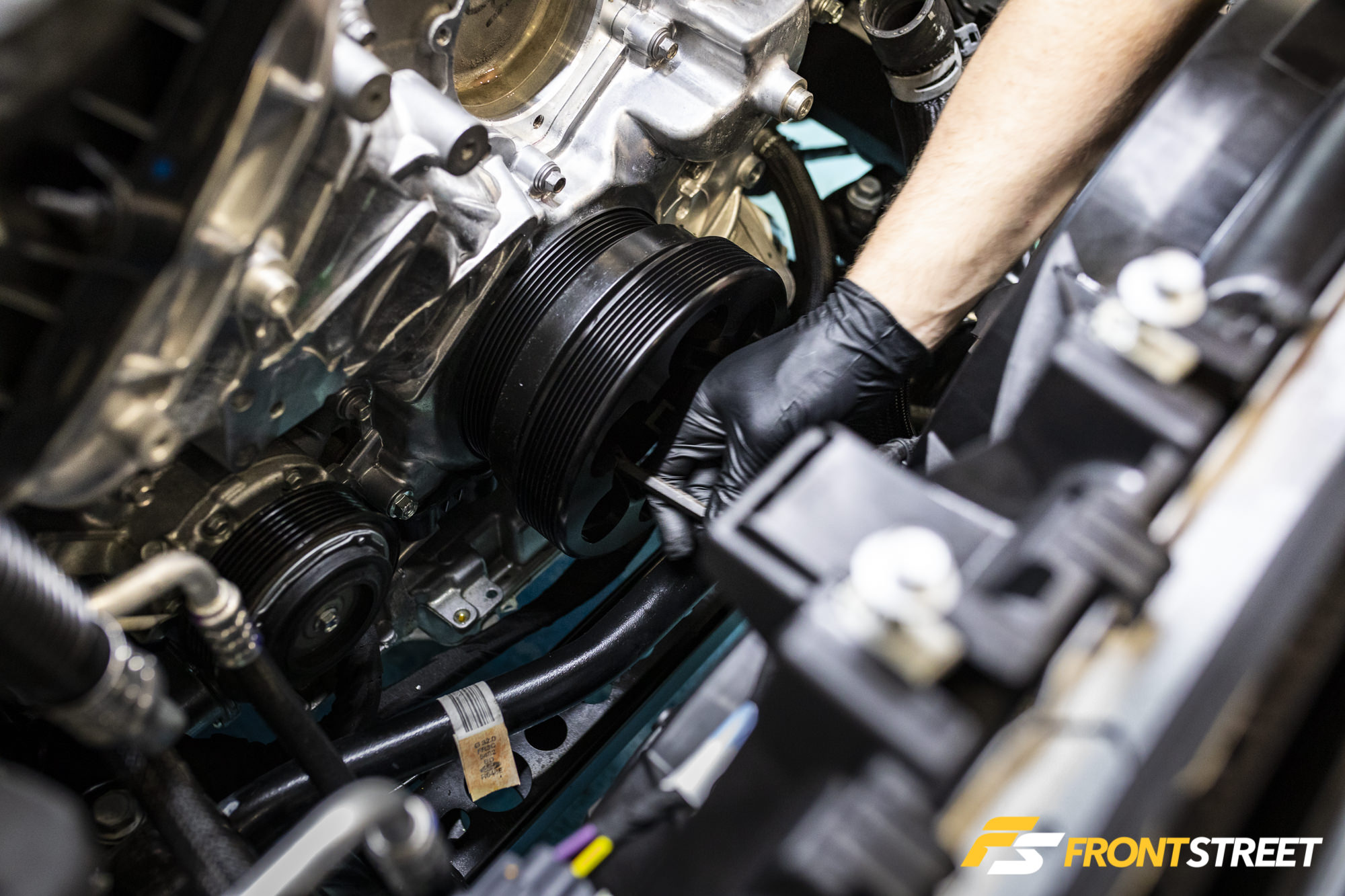
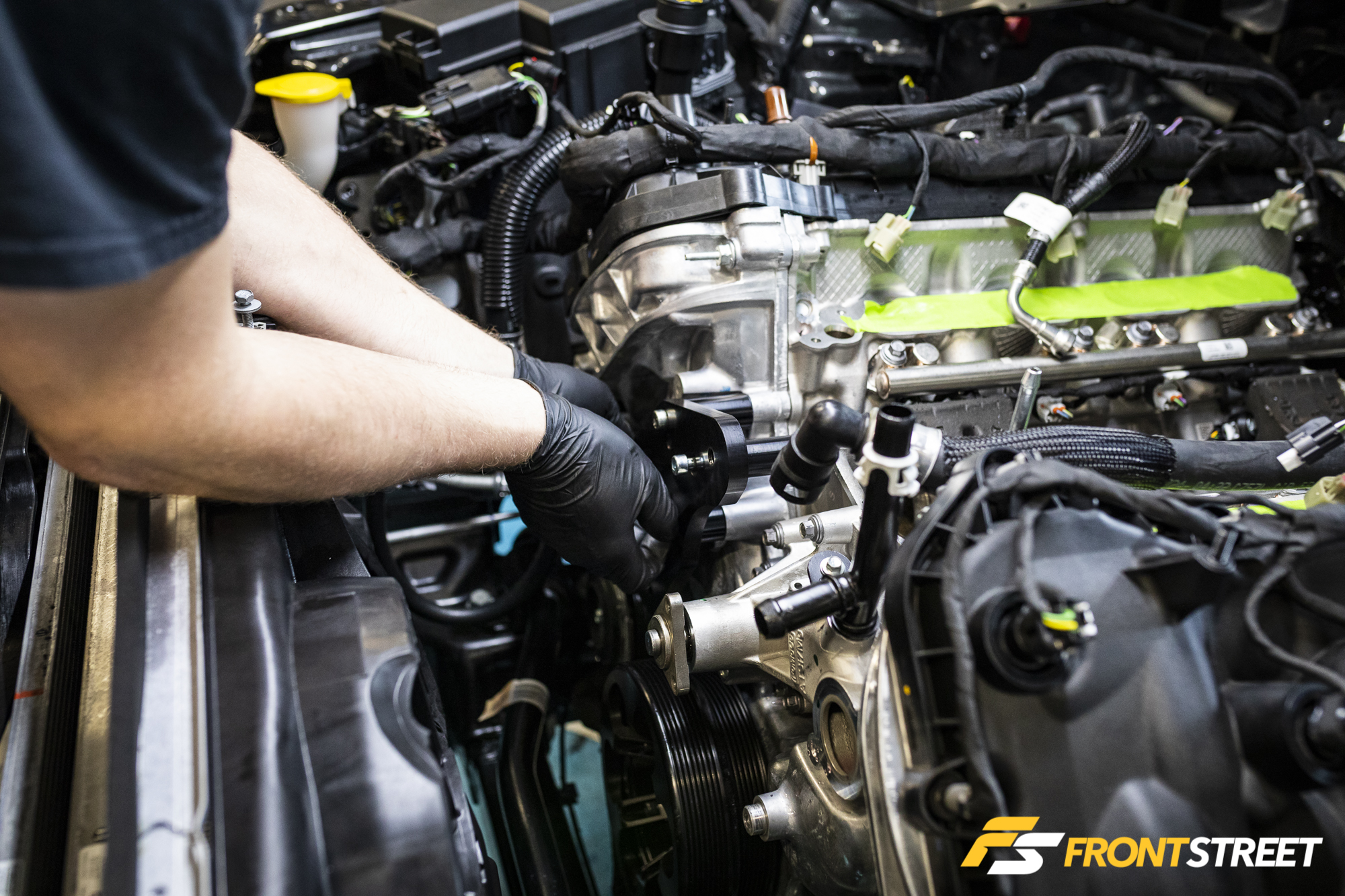
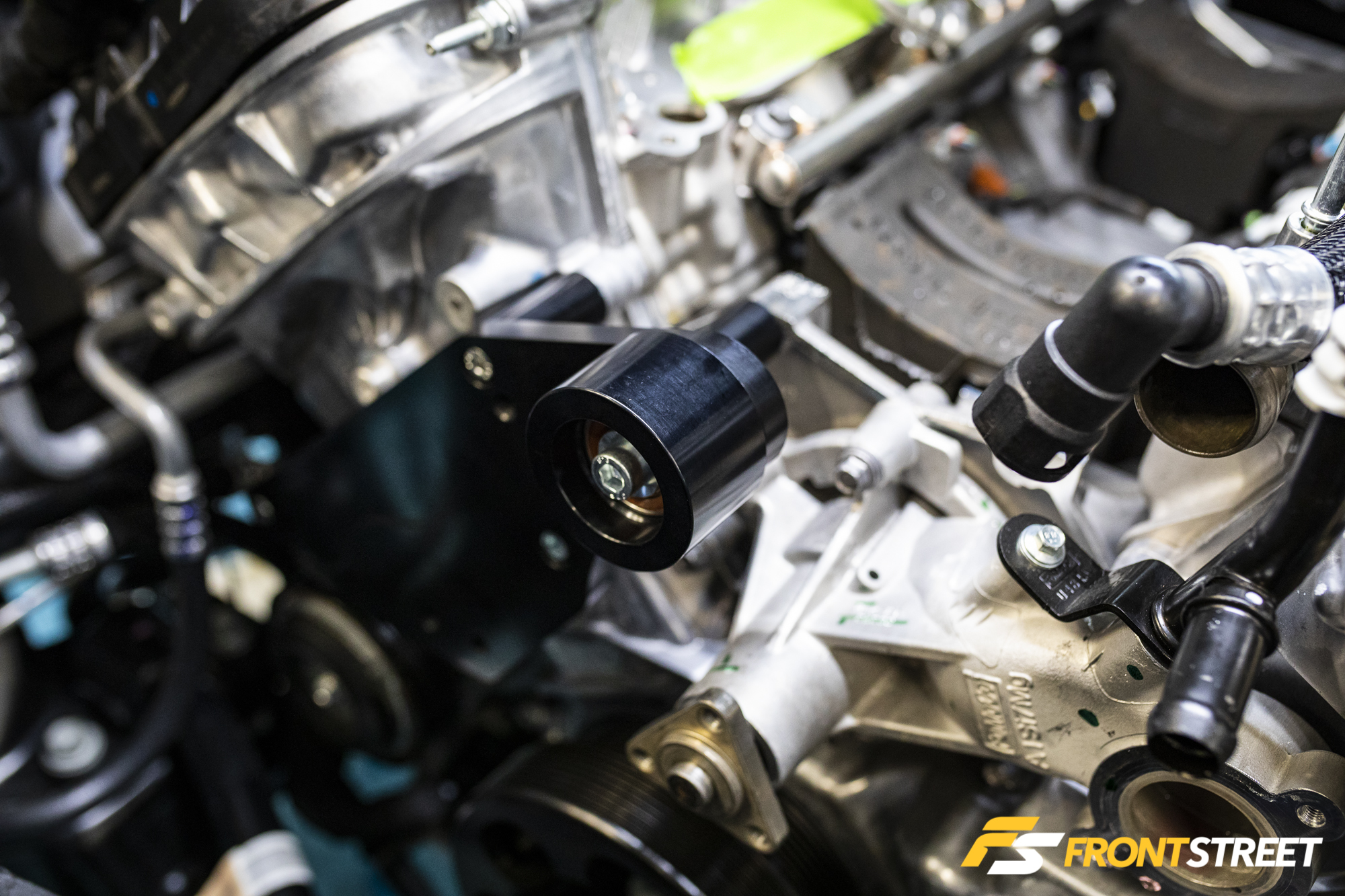
The eight-rib drive upgrade comes with a new harmonic damper, crankshaft drive pulley, water pump, alternator, and supercharger drive pulleys, along with a couple of idler pulleys and a brand-new tensioner.
So there’s something to note here. Because Evolution was installing the eight-rib drive system at the beginning of the install, a 3.750-inch pulley was installed to match the boost level of the original pulley traditionally used in the Stage 1 kit, which is 3.250-inches in diameter. The eight-rib system uses a 15-percent overdrive crankshaft pulley, so Edelbrock spec’d everything out to match since we’d be running the car on the dyno after each stage was installed.
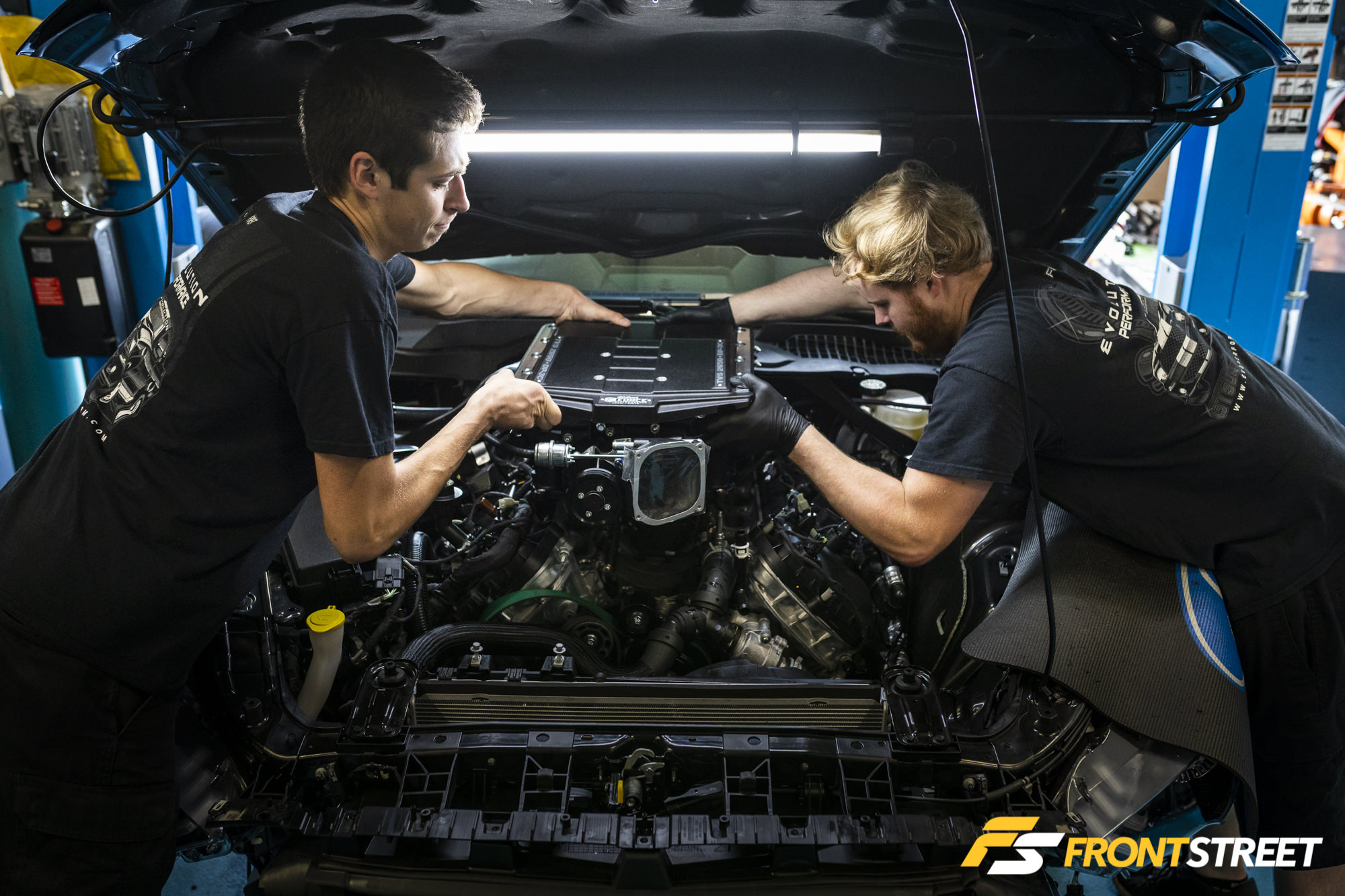
Have a buddy on-hand to help you lift the supercharger assembly into place; it’s not light, and the extra hands are required so you don’t drop it. Here Evolution’s Dalton Winkler and Steve Schechterly lift it into place.
Intercooling is important, and especially so with a top-mounted supercharger like the TVS-style design, as they can heat-soak through the direct contact with the engine. But heat-soak is not a problem for the E-Force system, thanks to the design of the intercooler and how the airflow path is configured within the system. In fact, on the dyno pulls, the Evolution team saw a miniscule 11°F rise in inlet air temperatures.
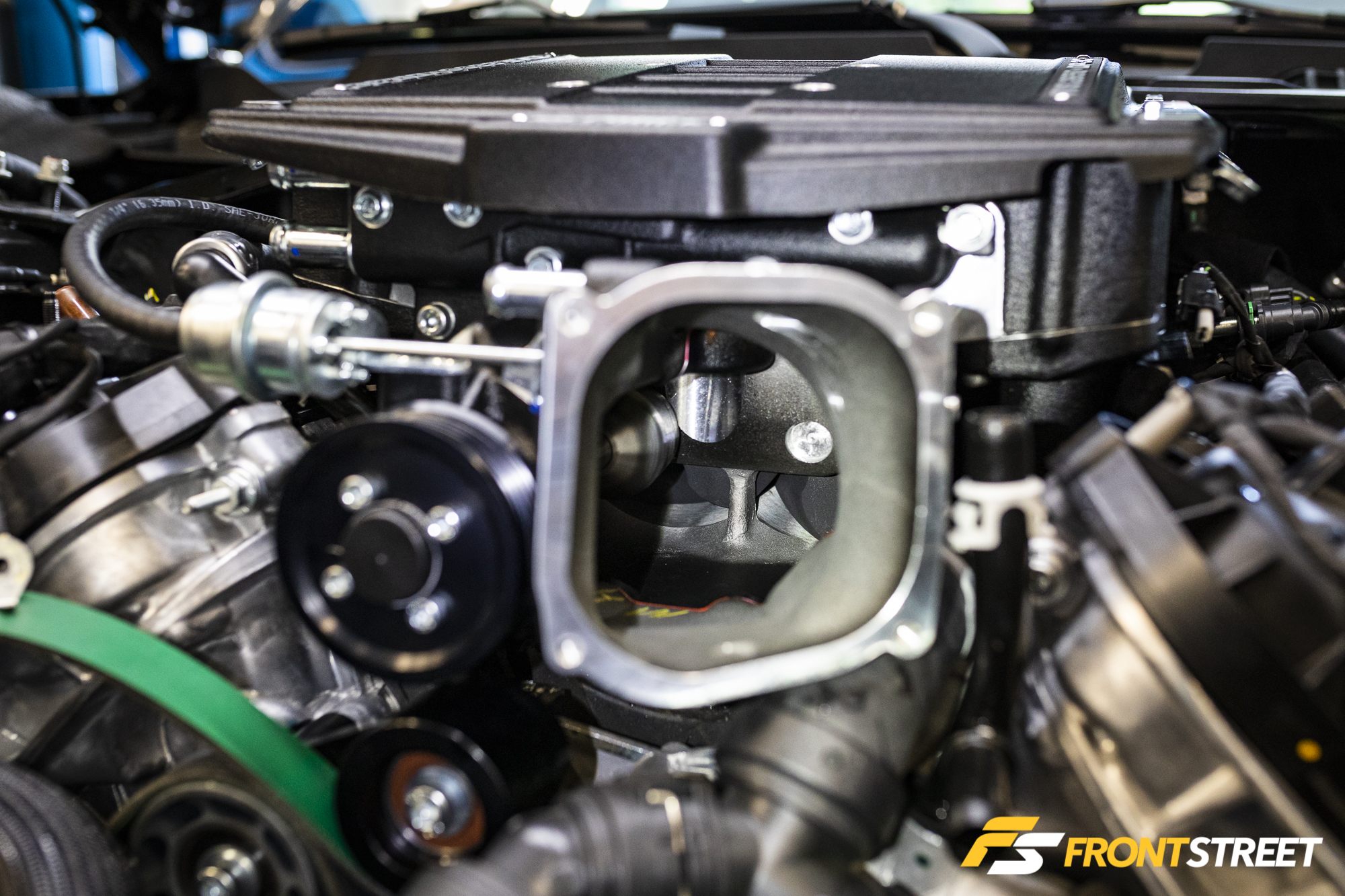
Edelbrock has tried to configure this system to offer the best of both worlds—the inverted supercharger design utilizes longer intake runners to build solid low-RPM torque, and the air-to-water intercooler maintains the air charge temperatures. The airflow path is as follows: air is sucked into the throttle body, through the supercharger’s rotor pack, up through the intercooler, against the intercooler lid, and then back down through the intercooler again before it enters the intake runners and subsequently, the combustion chambers.
“Our dual-pass, three-core intercooler is something really special. It’s perfect for the street, but also high-boost, high-horsepower racing applications,” says Purciello.
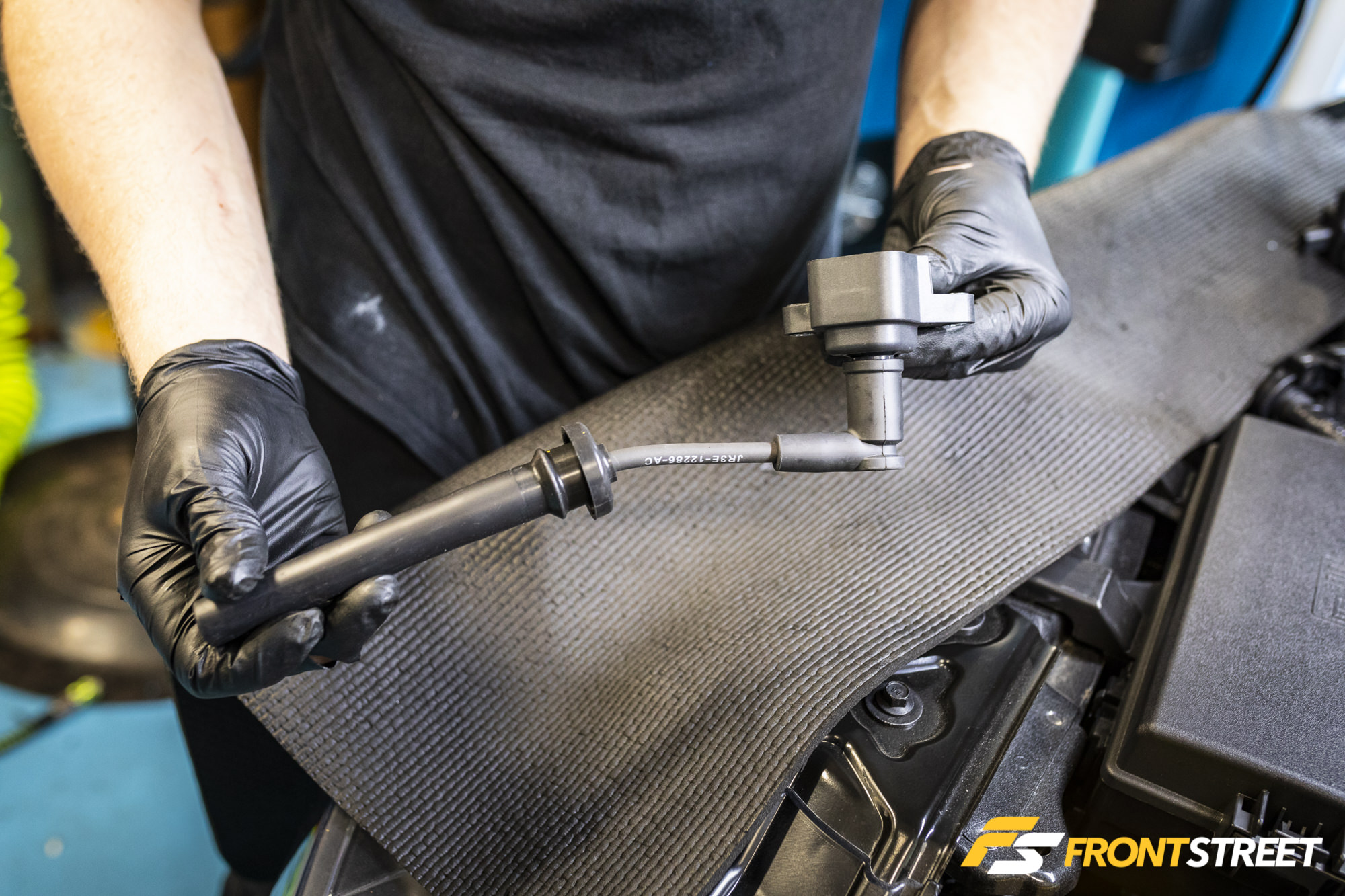
With the inclusion of gasoline direct injection on the 2018 Mustang, one of the coil packs needs to be removed from the top of the spark plug, necessitating this coil-near-plug situation, as the DI pump is driven by the camshaft and is in the way of the top of the plug.
“Our kits are designed to have minimal-to-zero modification to the vehicle if at all possible. You don’t have to get out the grinder and grind away part of the timing cover to install the bracket for the new tensioner,” says Purciello.
“It’s all designed to bolt onto existing mounting locations already on the engine. That’s important for the customer who isn’t bringing it to a shop—those extra steps where you have to modify and grind, sometimes you only get one chance to do that, and if you do it incorrectly, you could be in a really bad situation. This particular kit has one hole in the timing cover that needs to be drilled just a little bit deeper, and then tapped for a bolt. We actually provide the correct drill bit and tap in the kit. We try to preassemble as much of the kit as we can here at the factory.”
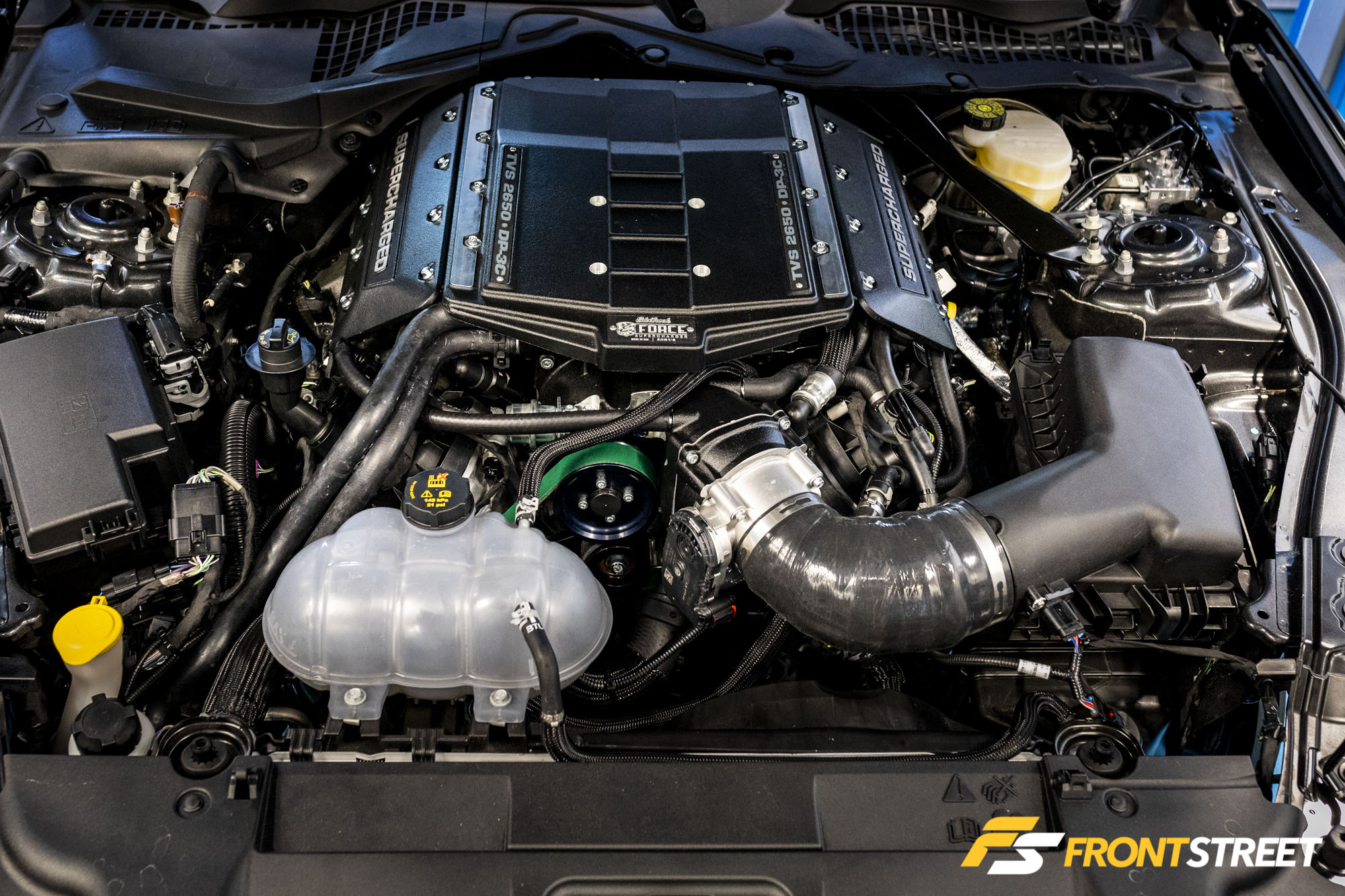
Above, you can see the supercharger system installed in Stage I form.
The platform was tested on the dyno in this configuration, with the stock fuel system and 93 octane pump fuel. With a custom tune from Jon Lund, Jr., who is the Lead Calibrator at Lund Racing, the numbers are outstanding, and a hint of things to come. How about 615 rwhp and 597 lb-ft of torque, with a seriously flat curve?
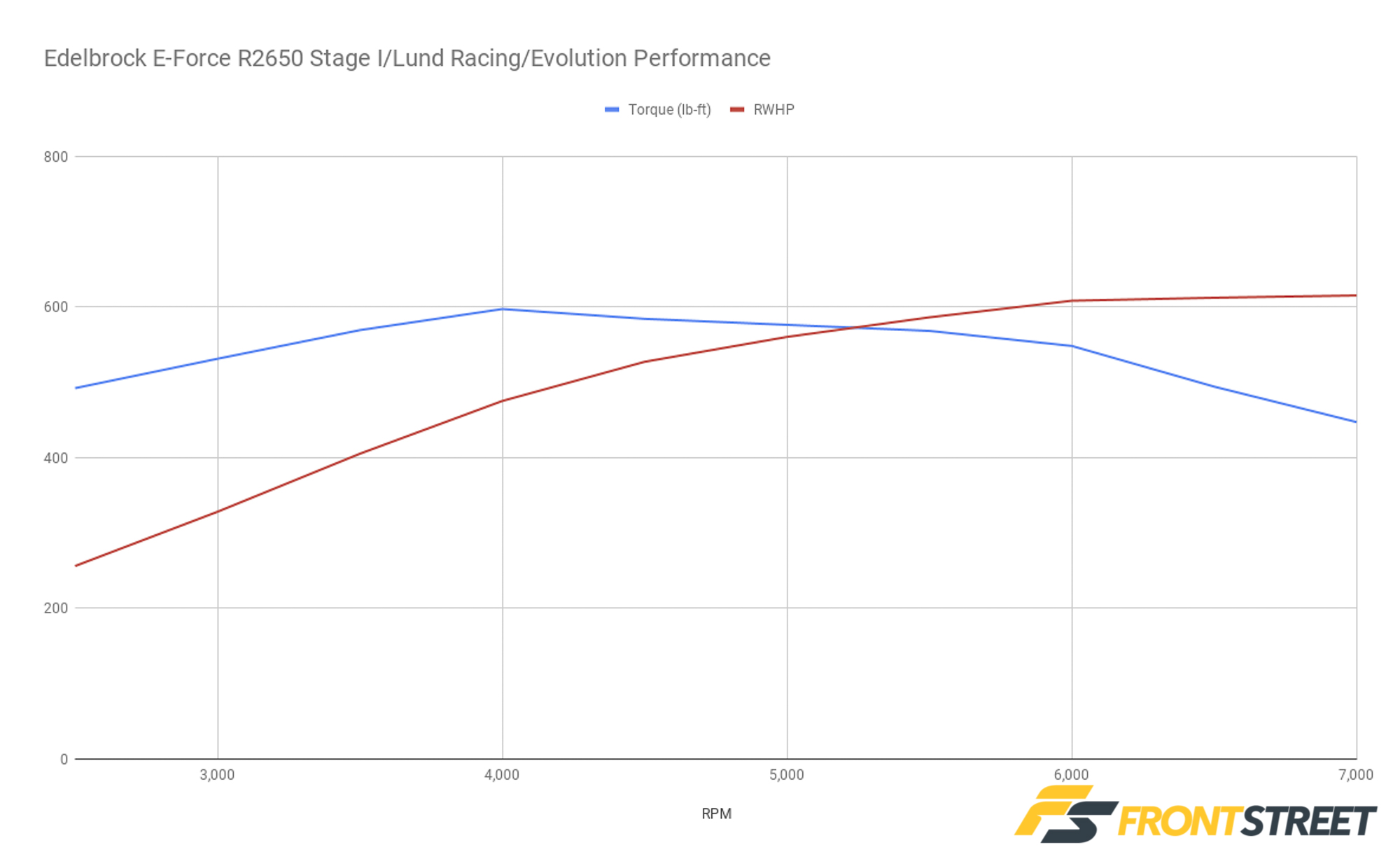
Stage II Goodness
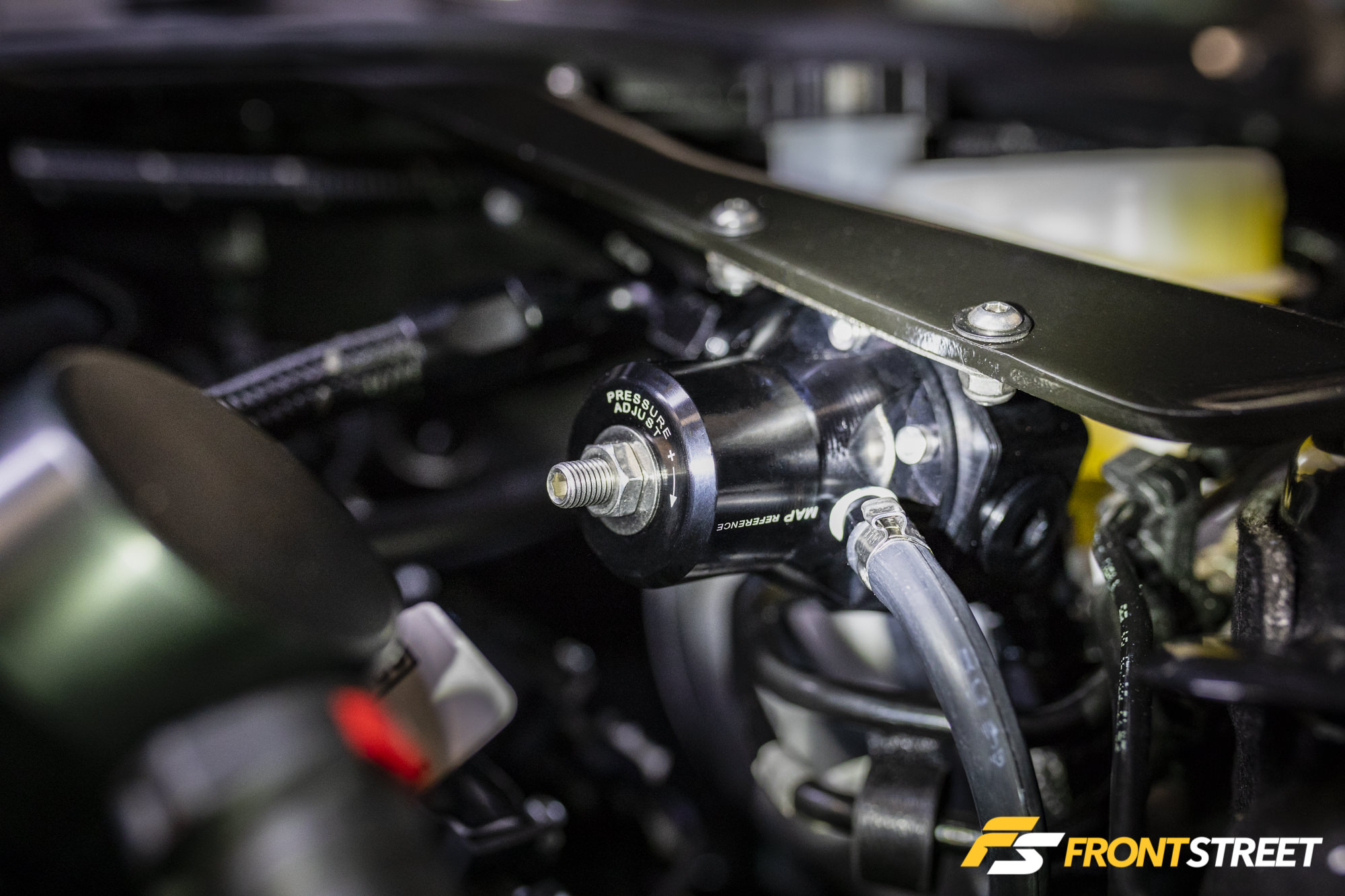
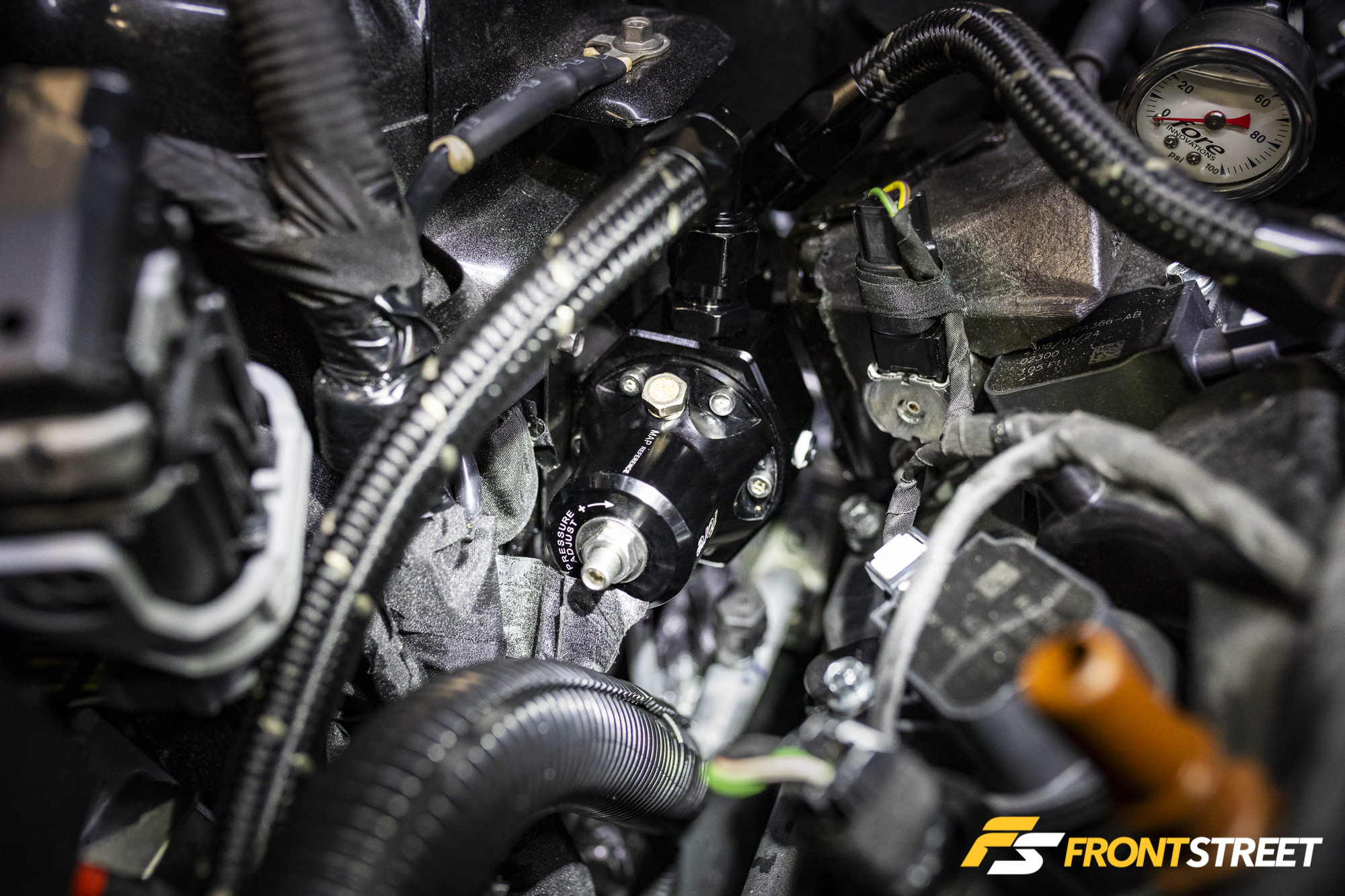
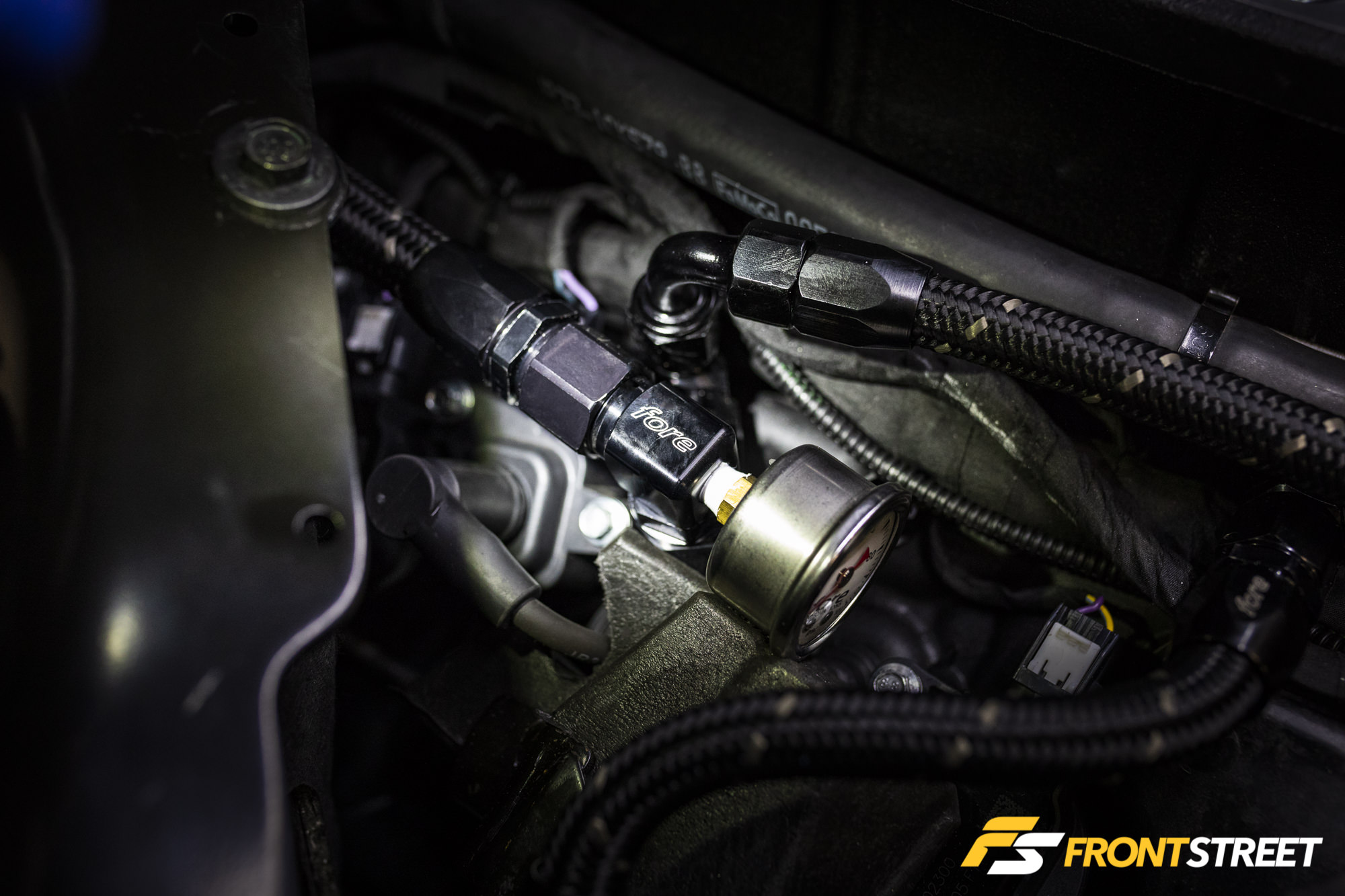
With a plan for E85 fueling—thanks to its high octane and low cost when compared to traditional unleaded race fuel—a good fuel system is essential, and to that end Evolution turned to their partners at Fore Innovations for one of the company’s triple-pump fuel systems, which includes a billet fuel hat, three pumps, all required fuel line, and a pair of fuel regulators—one for the port fuel injection and another one which plumbs in-line with the high-pressure fuel pump used in the direct injection system.
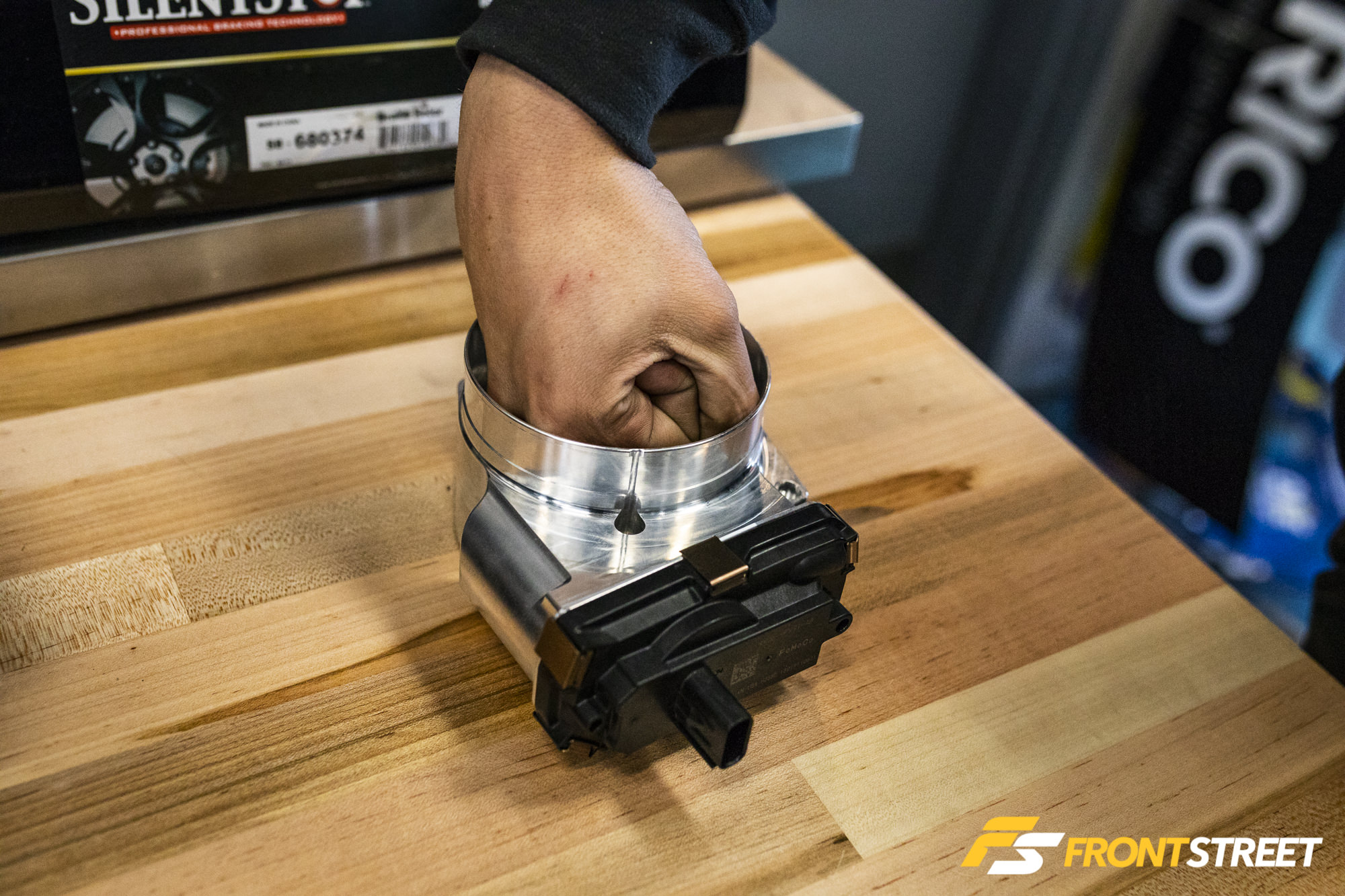
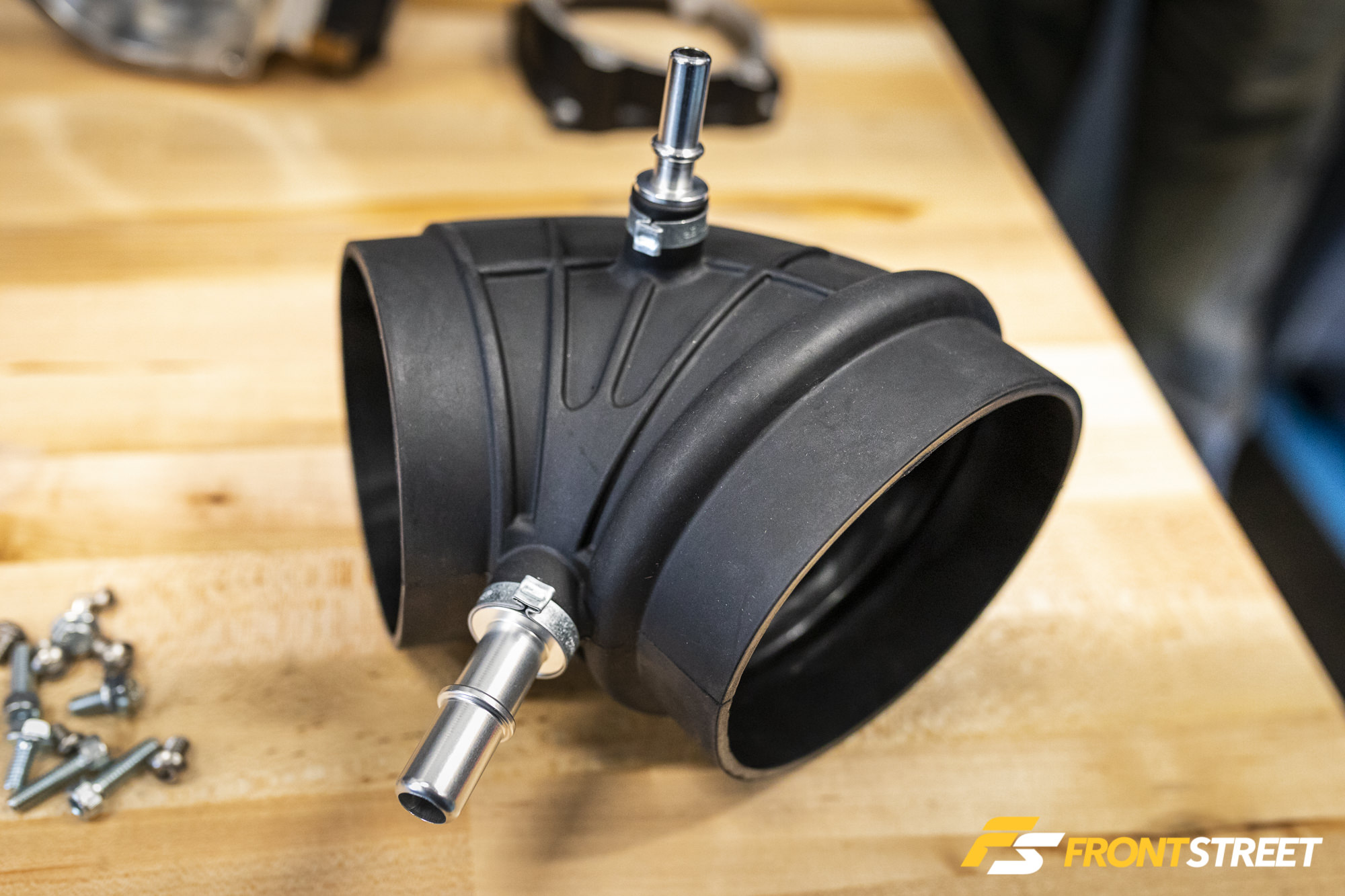
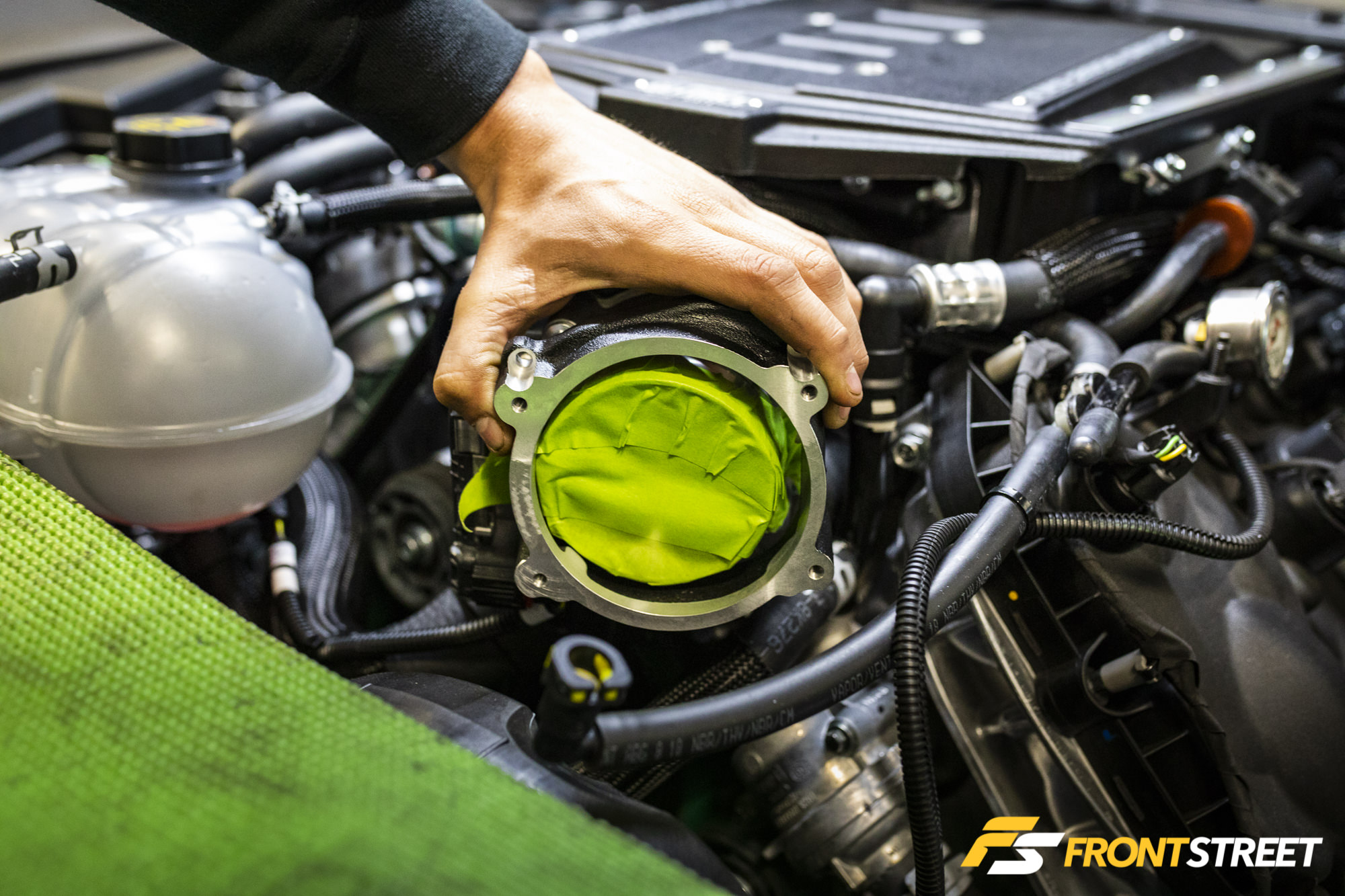
“The biggest difference between pump 91/93 and E85 will be fuel quality consistency and therefore the consistent ability to retain power. This goes for all power adders on any coyote, not just this particular combo and the 2018. Some 93 in some areas will be able to handle more ignition timing than others so you’ll see a bigger swing in achievable power. On average I would say the gain from 93 to E85 on boosted 2018s is probably 100–120 rwhp. Maybe more depending on the baseline on pump gas. If you factor in the ability to add more boost due to the octane, then the gains are exponential due to a bigger window of opportunity. Boost, 12.0:1 compression, and E85 are like eggs and bacon!” says Lund.
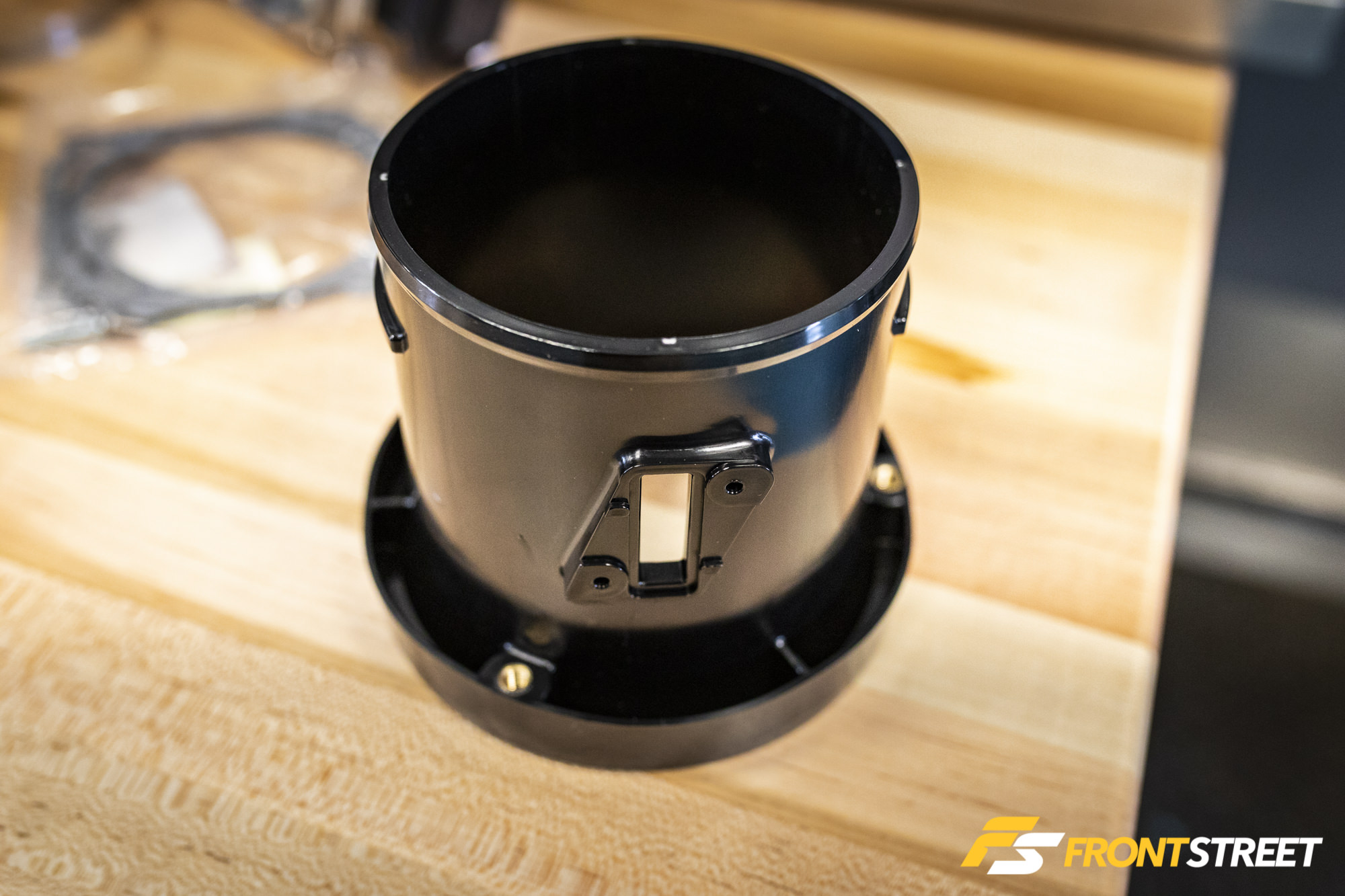
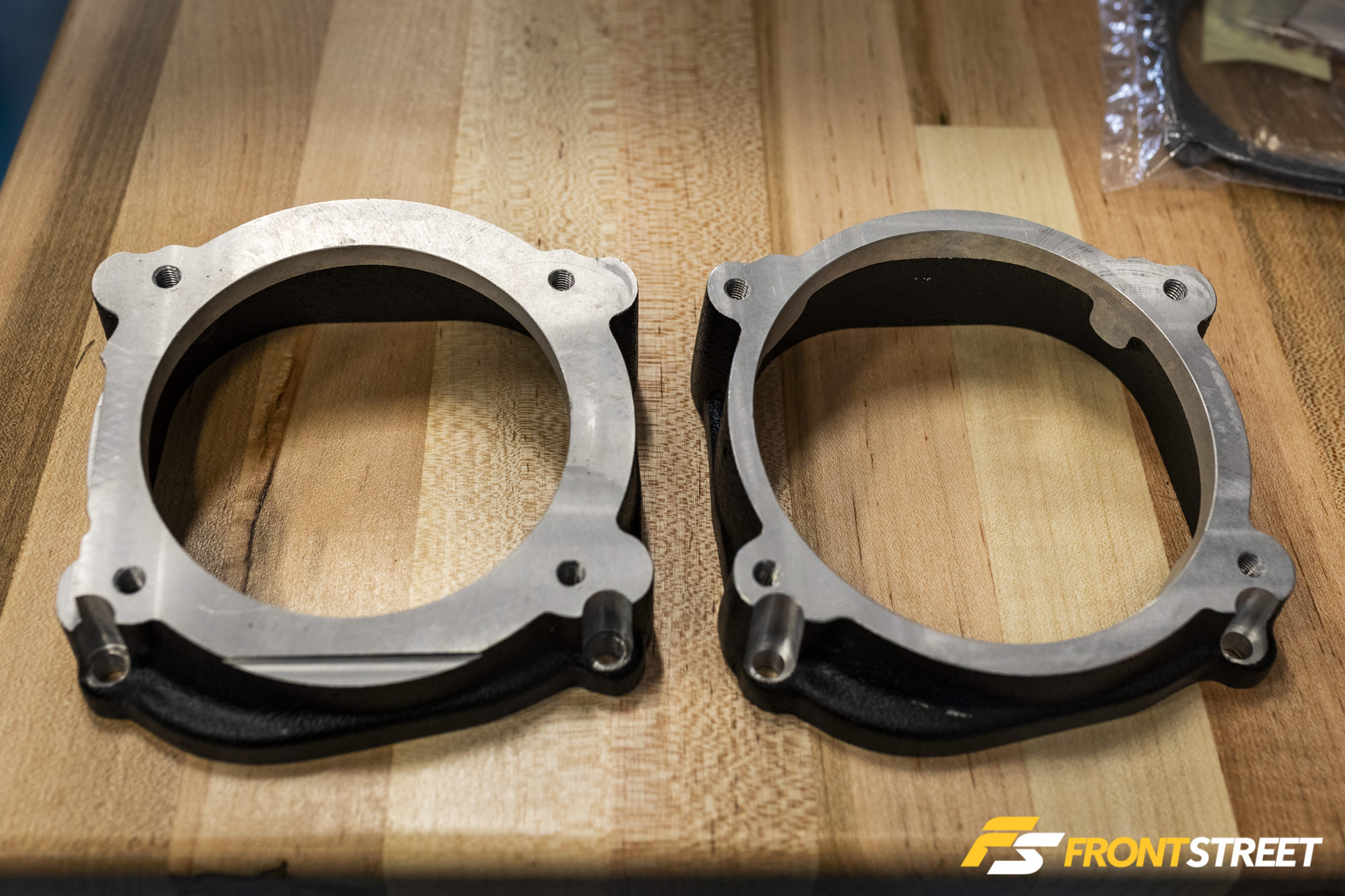
The S550 Mustang supercharger kit has a modular entry into the supercharger, and the Stage 1 kit has a 90mm entry with the factory throttle body bolt pattern, and any aftermarket throttle body up to 90mm in diameter. The Stage II kit—seen above in prototype form—will fit a 103mm throttle body opening and uses a GT350 bolt pattern. In addition, a 3.25-inch 8-rib supercharger pulley was swapped onto the supercharger, which produced 16 psi of boost pressure with the engine at full song.
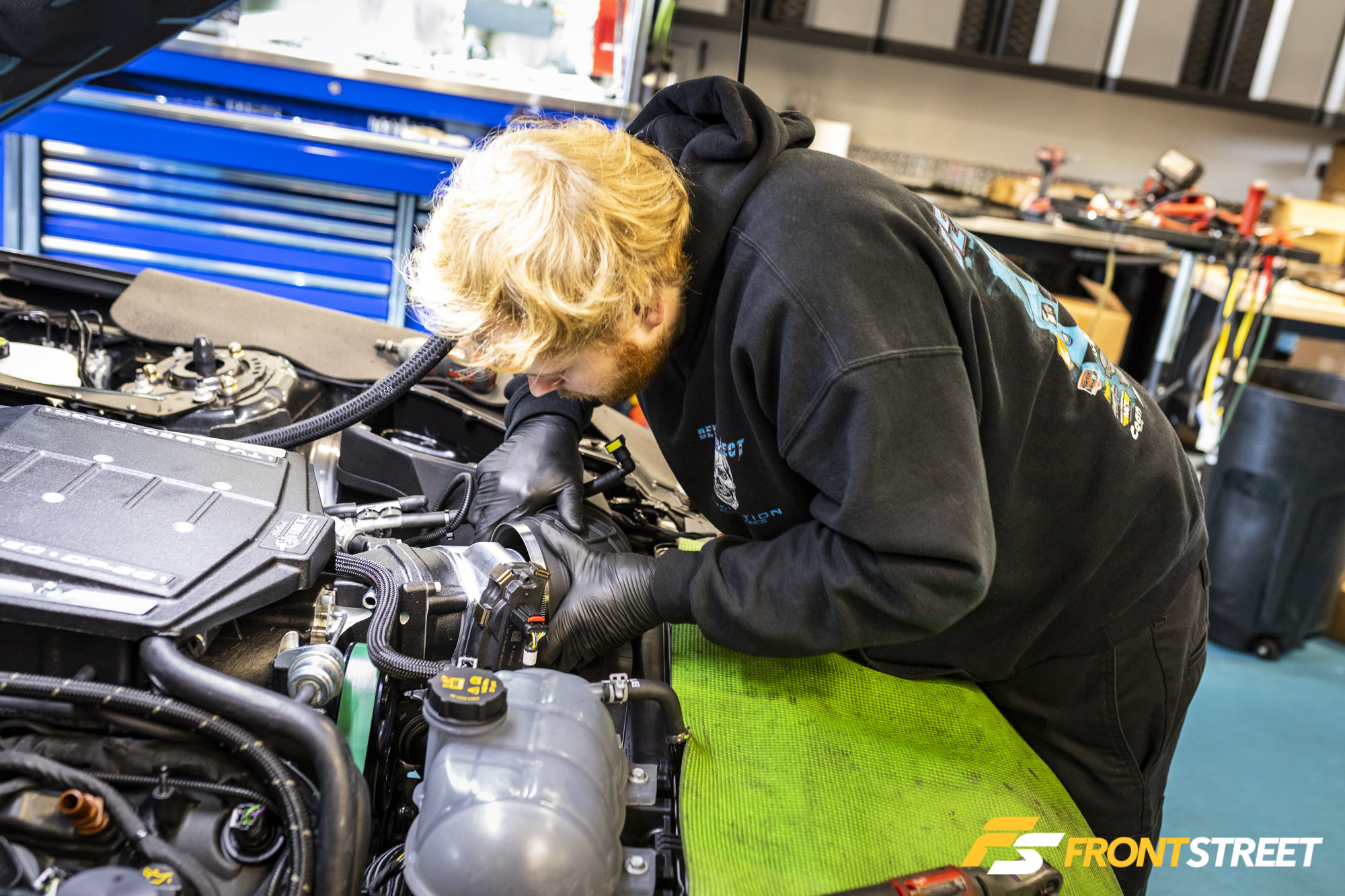
The Stage II system installed, with the larger air intake, bigger 103 mm throttle body, and inlet tube including the 113mm mass air sensor housing. This upgrade took just a few hours and made a massive difference in performance on the dyno.
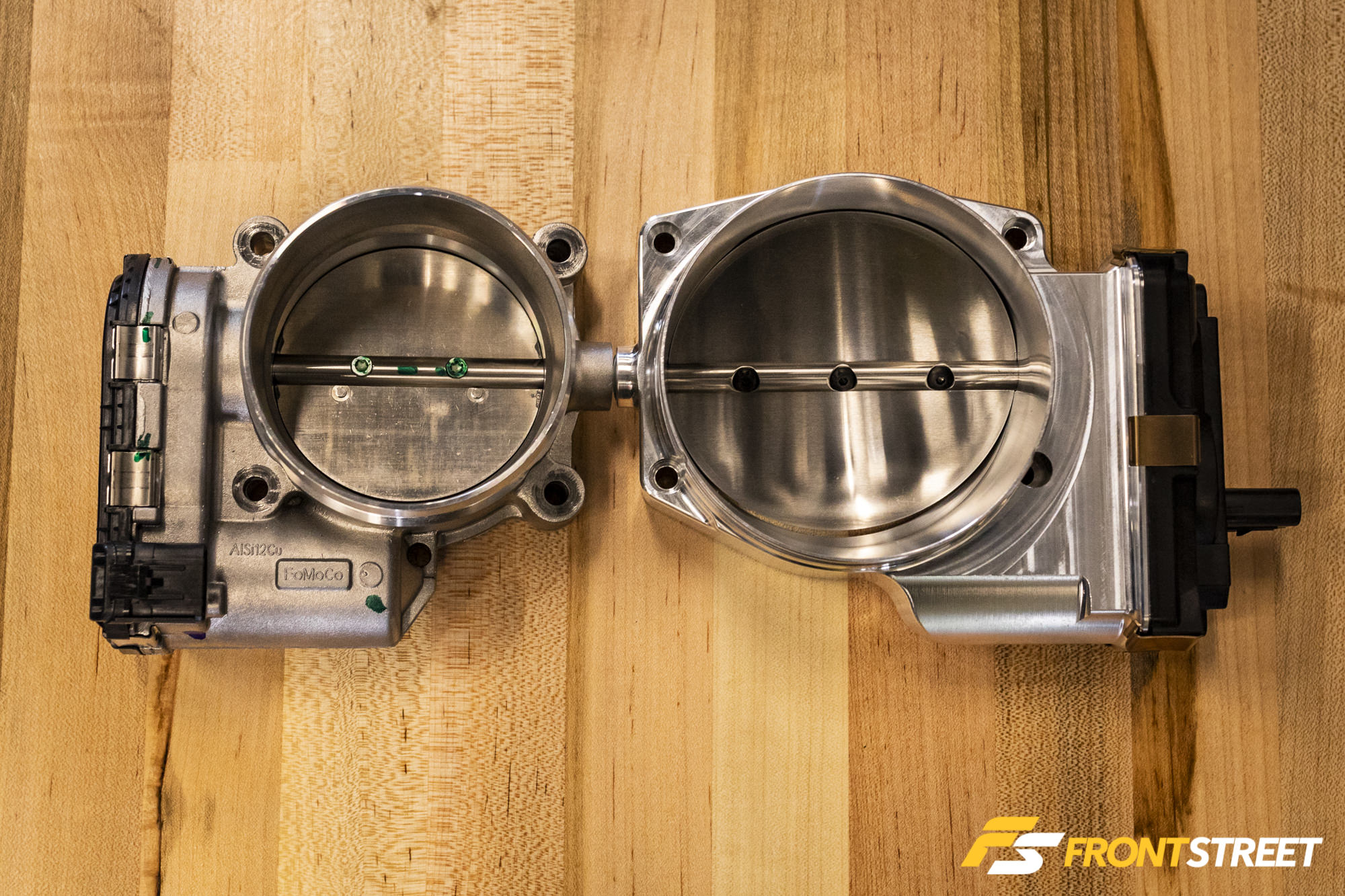
“The biggest tuning challenge was the new 103mm throttle body that Edelbrock offers as an option with this kit. It doesn’t use OEM 2018 electronics, but rather the 2018 Bullitt electronics which are similar to the GT350. It uses the latest digital TPS so everything jives properly without the need for a converter box. The reason these were used is because the throttle is designed based on the GT350/Bullitt throttle. It has a unique design, that without proper calibration can make it a bit of a challenge to get drivability correct,” says Lund.
After the install process was complete, it was off to the dyno to test the combination out with the new, larger inlet, throttle body, and fuel system to support the added power and smaller supercharger pulley.
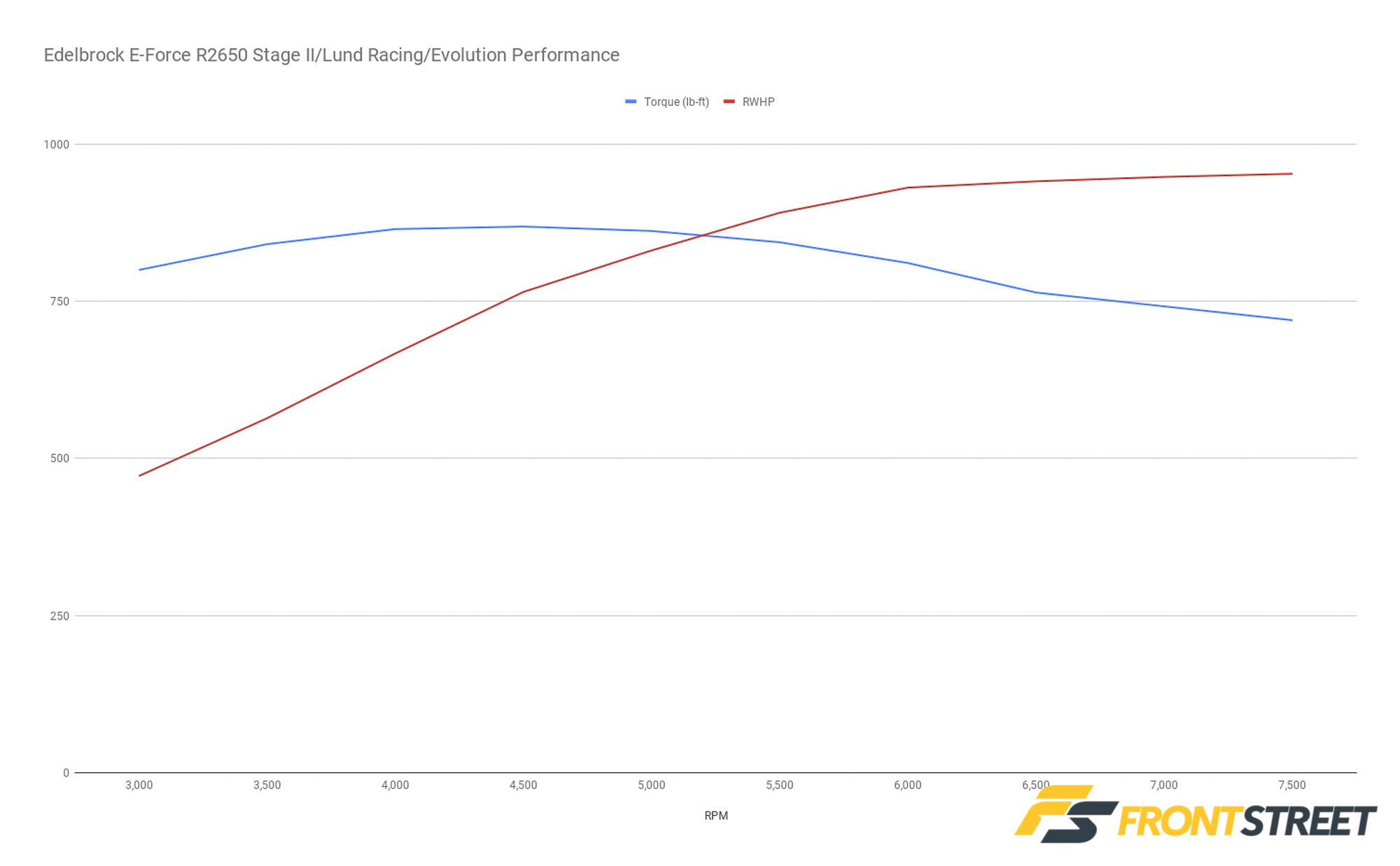
How does 961 rear-wheel horsepower and 869 lb-ft of torque sound? With Lund working his magic on the tuneup, and the E85 fuel in the tank, the results were kind of shocking. As you can see from the video, Devilbiss wheeled his Mustang to a 9.51 at a private test session at Maple grove Raceway—but Cook says it should have been much quicker.
“Brian is so used to eighth-mile racing anymore that he lifted early, somewhere around the 1,000-foot mark,” he says.
They are pushing the system pretty hard, though. Remember, this car still has a stock 2018 Mustang long-block in it: stock pistons, stock crankshaft, and stock connecting rods. Lund feels that with a built engine designed to handle more abuse, more boost (they aren’t anywhere near the limits of the compressor yet) and good engine cooling, somewhere near 1,050 rear-wheel horsepower is easily possible.
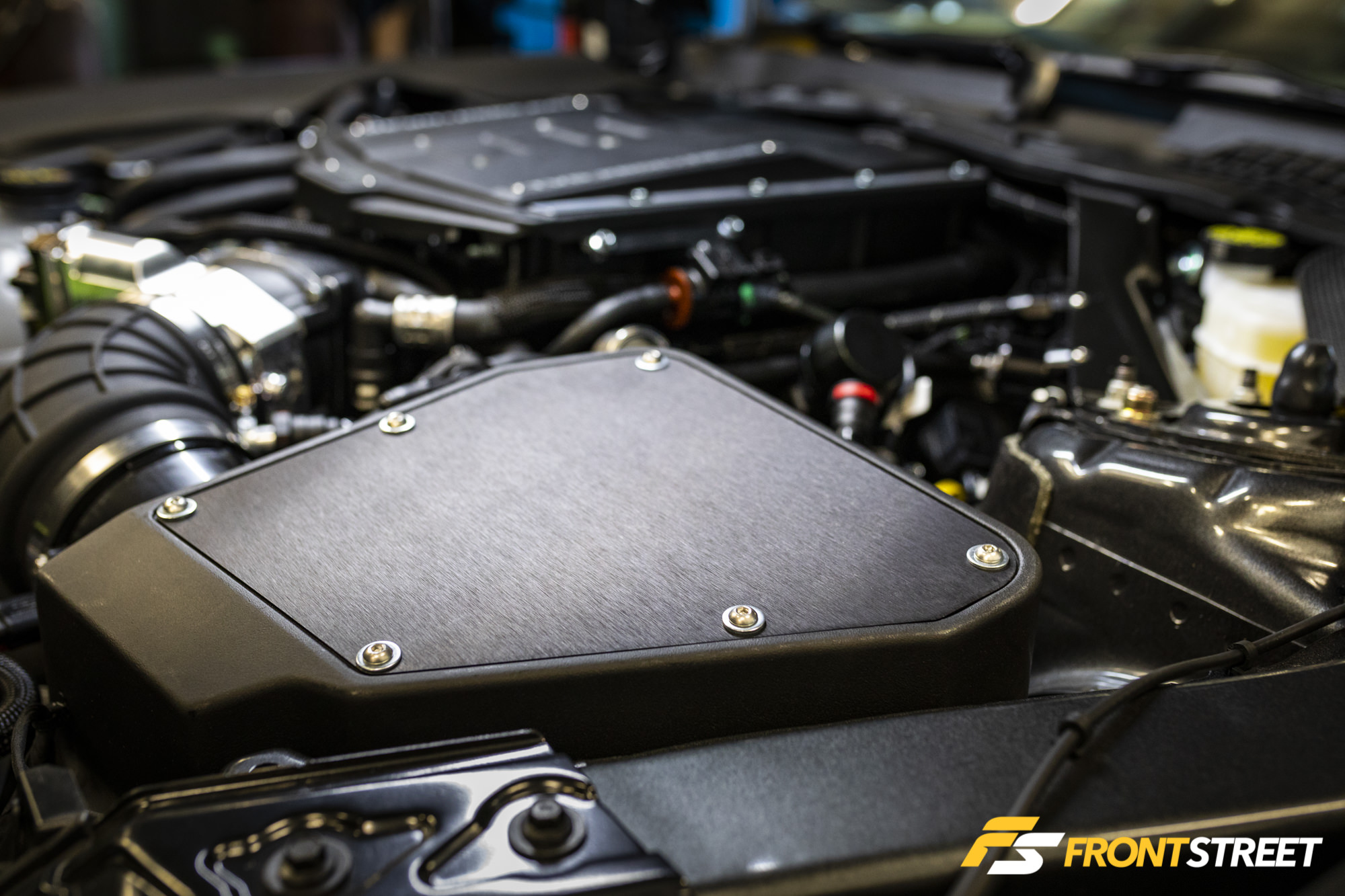
I’ve seen this car. It idles like stock. It starts up like it’s stock. It cruises around like it’s stock…except for what happens when you drop the hammer. That’s when all hell breaks loose.
Ultimately, this kit touches on a number of important factors that set it apart from the competition. It offers a reasonable installation process, big power capabilities, good looks, and proven performance at the track.
“With our system, you have the long runner, so the engine still operates and has response when you’re not in boost, and when you’re in boost, it has that instant throttle response and instant low-end torque hit. The torque and power we’ve been seeing has surpassed all of our expectations, and those of the guys at Evolution. Even the guys at Lund Racing were surprised at how well this supercharger was performing from 2,500 rpm all the way up to 8,000 rpm. It has an amazing operating range and efficiency throughout the whole range on the Coyote engine. It makes that 5-liter feel like a big-block,” sums up Purciello.
